- Cars, Jets & Yachts

How Much Does a Yacht Cost to Build?
The cost to build the world's largest superyachts is a closely guarded secret.
By Kim Ayling
The freedom that comes with owning your own yacht is unrivaled and, if you have the funds to do so, the joy of building your own is even better. However, with prices easily creeping up into the hundreds of millions, and even billions, we ask the all-important question: how much does a yacht cost to build?
Unsurprisingly, the total cost to build the world’s most famous yachts is a closely guarded secret, but there are a few fairly reliable estimations sailing around the industry. One standard way to work out how much a yacht will cost to build is price per gross weight. However, while this can be a helpful guide in valuing yachts, it doesn’t always correlate.
For example, it is thought that Lurssen’s 590-ft Azzam , which features a bulletproof owner’s cabin, an onboard golf practice suite and a submarine, cost in the region of $600m to build. At approximately 13,136 gross tons (GT), that would have made her around $45,676 per GT.
REV , on the other hand, which while still in construction is set to surpass Azzam as the largest yacht in the world at an impressive 602ft, is estimated to be costing around $350m to build. Her weight is thought to be around 17,440 GT, putting her at $20,069 per GT. Clearly, biggest doesn’t always mean most expensive. So what does affect the cost of a yacht build?
[See also: How Much Does it Cost to Charter a Yacht?]
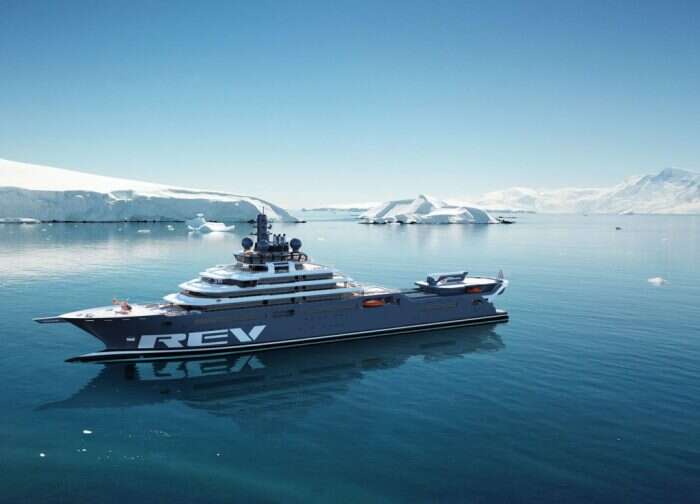
REV is thought to be costing around $350m / ©REV Ocean
Custom vs pre-designed yachts
Firstly, you need to decide the kind of yacht you want: custom or pre-design. Naturally, a custom yacht build will be more expensive. But, for that extra cost, you will get full control over the design, the finish and everything in between.
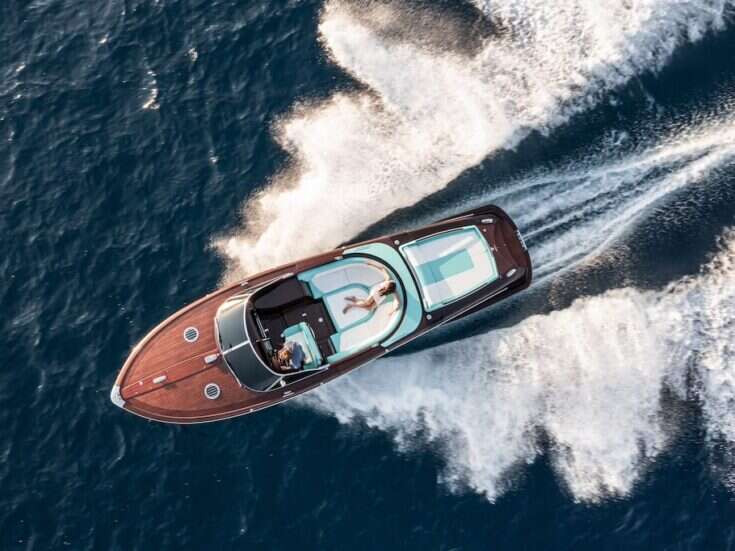
The Ultimate Tenders to Pair With Your Superyacht

Sea Change: The Sunreef 88 Ultima Yacht
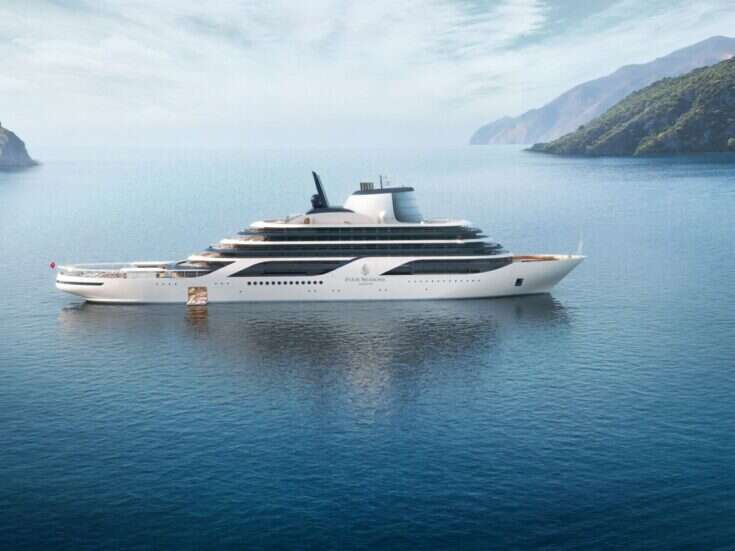
Four Seasons Yachts Announces its First Luxury Itineraries
A pre-designed yacht on the other hand will save you both money and time. This category of yacht is built based on an existing model, with finishing touches such as interiors, tenders and layout completed when she’s bought. Obviously, this leaves owners with a lot less freedom over their yacht, but it is considerably cheaper and can be delivered in a matter of months instead of years.
Choosing a yacht builder
The world of shipbuilding is dominated by a few key players. For a fully custom build, the likes of Lurssen, Feadship, Oceanco and Royal Huisman (among several others) rule the roost. With builders like this, you can expect to pay a higher price, but for that, you’ll receive years of experience, industry prestige, and cutting-edge technology and techniques.
The most prestigious shipyards will also inevitably have the most skilled team. The team involved in building a yacht is, to put it simply, vast. From start to finish, hundreds of pairs of hands will be involved in the process, with the key players including a yacht designer (interior and exterior), a naval architect and an engineer, as well as a huge team of skilled laborers. There will also be an owner representative working closely with the shipbuilder to ensure the project is delivered in time and to the buyer’s exacting standards.
Content from our partners

Sky High Gourmet: Qatar Executive’s Impressive Dining

The Best Family-friendly Vacation Destinations in Spain

W New York – Times Square: “We Do Things Differently”
The cost of your yacht build will of course include the wages of each of the experienced people involved in making it, so if you want the best, expect to pay for it.
[See also: Discovering the World’s Most Exciting Superyacht Concepts]

Viva by Dutch shipyard Feadship / ©Feadship
What affects the cost of building a yacht?
Naturally, a huge variety of factors will impact the total cost of building a yacht. Size is of course one of the main considerations, but materials are another key factor that will dramatically impact cost. Aluminum, for example, is favored for being an impressively lightweight hull material but ton for ton, it is far more expensive than steel.
Onboard technology will also see the final cost creep up rapidly. Demand for smart yacht technology, for example, is continuing to grow, with more owners wanting to replicate the ease of voice control tools that they enjoy in their home, onboard their yacht.
And things that we might take for granted on land such as high-speed WiFi become more complicated – and more expensive – on the water. Kitting your yacht out with a satellite dish can set you back anywhere up to $50,000 which while doesn’t sound much in the grand scheme of a multi-million-dollar ship build, is just one of many hidden costs.
How much do yacht toys and tenders cost?
The yacht itself is just the start of the story when it comes to working out costs. On top of the build, potential owners will need to kit out their boat with all the latest toys and tenders – from submarines to helicopters – which can add a serious amount to your total.
For example, a self-drive submersible by Triton Submarines , which will allow owners to see the underwater world in a completely new way, will start at around $15m. Similarly, while you can pick up a low-grade, second-hand tender for a few thousand dollars, a top-of-the-range option will easily creep into the millions.
Ultimately, the only way to work out exactly how much a yacht will cost to build is to make a serious inquiry with a broker, who will be able to connect you with a yacht builder. From here, you can collaboratively work together to ascertain your budget and exactly how much your perfect yacht will cost.
[See also: The Most Innovative Yachts of the 21st Century]

Oceanco, who made the sleek Esquel, is one of the best yacht builders in the world / ©Oceanco

Latest in Luxury
The explorer.
Thank you for subscribing to Elite Traveler.
Page Loading
- Vessel ltinerary
- Administration
- Dockage & Fuel
- Maintenance
- Capital Repairs & Reserves
- Total Expenses =
- Name Length Build
- # Total Expenses Date Saved
Advanced functionality coming soon.
Us flagged vessel, health insurance costs per crew, uniform cost per crew, training cost per crew, food cost per crew, crew turnover, hires using a professional crew agency.
- Restore Default
- $ | € | £
Costs of food provisions will vary dependent upon how eloborate food Preferenaces are
Location will play huge factor in food provisons and thing may have to be folws into remorte locations.
Crew is one of the largest expenses on a superyacht and critical to the owner’s enjoyment of their vessel. As the largest crew agency in the world, we know crew. Our cost calculator contains customized crew lists for yachts ranging from 80ft to 600ft with salary information based on our reference verified salary data.
Our users also have the ability to completely tailor the crew list to the specific needs, schedule and requirements of their vessel. Each yacht is unique and may have specific owner requests in addition to the yacht’s safe manning requirements.
Management of the supplemental crew costs and strategic budgeting can help avoid significant overspend on categories such as food and uniform. This tool contains default values based on our industry expertise and recommended budget for an efficiently and safely run superyacht.
To learn more about each crew position in detail, including salary ranges, please visit our yacht department directory .
Drag the sliders to modify your results. These are not linear scales and we expect most yachts to operate within the 20-80% window. Above 80% and below 20% costs increase or decrease at exaggerated levels and we only see numbers in these levels in very rare circumstances.
This sunburst diagram is interactive. You can click into each block to see the expense break down and mouse over each block for more details.
Our chart of accounts displays seven major categories, 20 sub-categories plus a further 80 detail categories for a total of 107.
Our yacht operating cost calculator is now on it’s third major revision. We start with actual yacht expense data from our yacht management accountants and then generate formulas to extrapolate out the budget for a wide range of yachts. We have been providing accounting services to large yachts for the past 18 years.
Our operating cost calculator is tuned for yachts from 80 to 600 feet. We find operating variables create the largest variances for yachts smaller than 100 feet and larger than 250 feet. We have tested the numbers the most in the range from 100 to 250 feet.
Our budget calculator factors in the fuel burn for a range of engine sizes typically seen installed on yachts by length. By dragging the green “fuel dockage” slider to the right you will increase the projected fuel burn rate and therefore the budget cost for fuel. Our default position would be for a typical displacement fuel burn. Position the slider in the 60-80% range for fuel projections for planning hulls.
Our default values produce a budget number that we believe is generous to run a yacht to a high standard. Perfect is a very expensive word to use in the yachting industry where standards are already high. Moving the crew and maintenance sliders to 80% will provide an “industry best” quality of crew and give them the maintenance budget to operate to a very high standard. If you need to go over the 80% area then you may have unusually labor intensive equipment on the yacht.
Yes, our yacht operating cost calculator can output a budget suitable for this situation. Adjust the owner use to 2 (minimum value), owner slider to 0, crew slider to 10%, Administration to 10%, Fuel and Dockage to 0, Maintenance to 10% and then Capital Repairs to 0. This will remove all of the large charges associated with owner use and vessel movement but leave the essential base maintenance and insurance in place.
Lift on and float in yacht transport is a popular way to transport yachts across large ocean passage. The yachts that this service certainly applies to are ones that may not have the motoring range or structural integrity for blue ocean cruising. The cost of transporting a yacht twice per year is put into our budget once the “Fuel Dockage” slider hits 75%. If your yacht has the range we recommend self-sufficient ocean passages whenever possible. Whilst the transport companies sell their services based upon reportedly well oiled operated schedules the reality is that your yacht may stay waiting for pickup for a week or more with no compensation due. When factoring in all secondary factors of self-sufficient passages (increased fuel, maintenance, potential storm damage, crew time off, extra delivery crew) compared with transporting your yacht (insurance, potential loading / unloading damage, loss of schedule control, no work whilst underway, crew flights, crew accommodation) we believe that there is a 100% premium associated with float in transport and a 75% premium with lift on transport compared with self-powered.
Abandoned yachts crash in value. We recommend that even if you are trying to sell your yacht that you use the yacht for a minimum of two weeks per year so that systems are tested and working every six months. There is nothing worse for a yacht than not being used. If you truly are not going to use the yacht then you should sell it immediately for the first genuine offer as every dollar you put into maintenance will not be recovered at the time of the sale.
We did not build this version with sailing yachts in mind. Early in our development of this version we decided to exclude sailing yachts as a few of the major cost drivers scale very differently for sailing yachts compared with motor yachts. For example: To calculate paint costs we reviewed the surface area of over 100 large yachts and created a formula for painted surface area to length. Sailing yachts just don’t scale in a consistent way. Similarly crew numbers don’t scale in the same manner that they do for motor yachts. If there is sufficient demand we may build a sailing selector switch into a future version of this tool.
We hate to hear when yacht owners were told by their broker to factor in 10% of the purchase price to operate the yacht. This over used saying is sadly right occasionally (particularly for newer yachts in the $20-30M range)… but just because a broken watch tells the right time twice a day you shouldn’t rely upon it to tell the time. As yachts get older their capital value decreases but their maintenance costs increase. There is no way that a fixed 10% of purchase cost rule can be true… if your broker told you this rule then you need a new yacht broker… we know some good ones. 😊
Advanced functionality coming soon…
We are building advanced tools to allow you even greater control over our operating cost calculator. Please enter your email address below to be advised when it is available.
Save this version
Share your calculations, please save version before sharing luxyacht - calculator, you must be logged in to save this version of the cost calculator that you have customized for your yacht..

Your Vision. Your Burger.
Creating a custom-built yacht is a journey unlike any other. Conceiving your yacht alongside Burger’s engineers and design team is a remarkable experience: developing the specifics, reviewing the plans and making decisions as you watch your dreams materialize before your eyes. Burger welcomes all clients to enjoy the progression of their journey while your custom creation evolves.

The first step in delivering the yacht of your dreams is to share your vision with the Burger design team and engineering staff. Our in-depth design brief helps define your priorities for a yacht. We recommend touring the Burger shipyard where you can meet our exceptional team, learn how your yacht will be constructed and to witness the true value of Burger’s experience and craftsmanship.
After defining your vision, your dreams will begin to take shape in dramatic conceptual designs, renderings and cost estimates, presented for your direction and approval before moving forward.
Conceptual designs and renderings include:
- Hull designs
- Exterior styling and interior floor plans
- Interior elevation renderings
- Engines, propulsion and electric generation equipment selection
- Special requirements, including recreational and/or shore tenders and storage options
- Navigation electronics and entertainment system descriptions

Once you’ve approved the design, Burger will prepare a detailed design and specification breakdown with descriptions of every step in your yacht’s construction; from its development milestones to key points of approval. With a finalized and signed contract, your yacht is on the way to fruition. Each step of the build is documented before work begins, with a detailed timeline that describes each step of the process, so that you remain involved and aware of our progress, every step of the way.
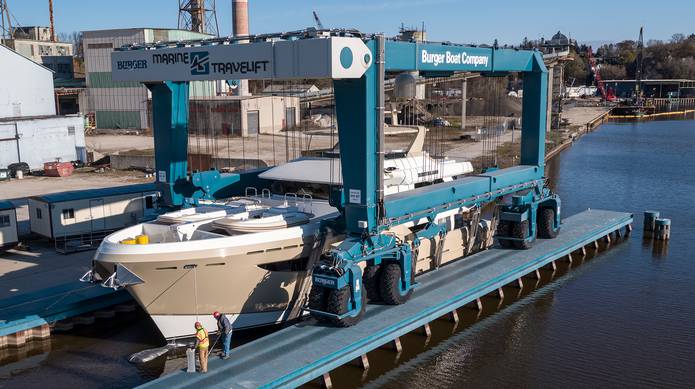
Months of careful planning and construction culminate when it’s time to launch your new Burger yacht. Along with the Burger team, you and/or your captain take your new Burger yacht through various sea trials, including at-sea observations and detailed walk-through inspections. At this stage, final modifications and refinements are made.
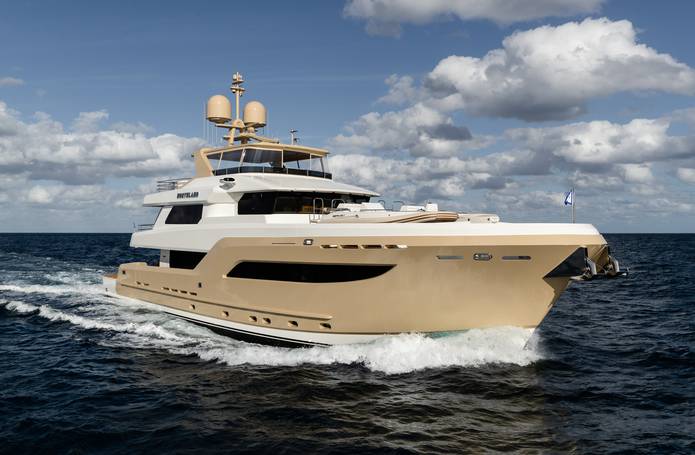
Congratulations; owning a Burger built for you also means you’ve joined the most exclusive fleet of yachts in the world. Our craftsmen share your pride in seeing your new yacht launched, and value each customer relationship that endures long after delivery. Bringing your dreams to reality is what makes every Burger yacht unique and extraordinary.
With your Burger set out into open waters, a new journey begins.
Custom Yachts
View Burger's full fleet of custom yachts, uniquely crafted to each owner's vision of limitless luxury.
Design Concepts
Explore Burger's newest design concepts and yachts under construction — and bring your ideas to their design.
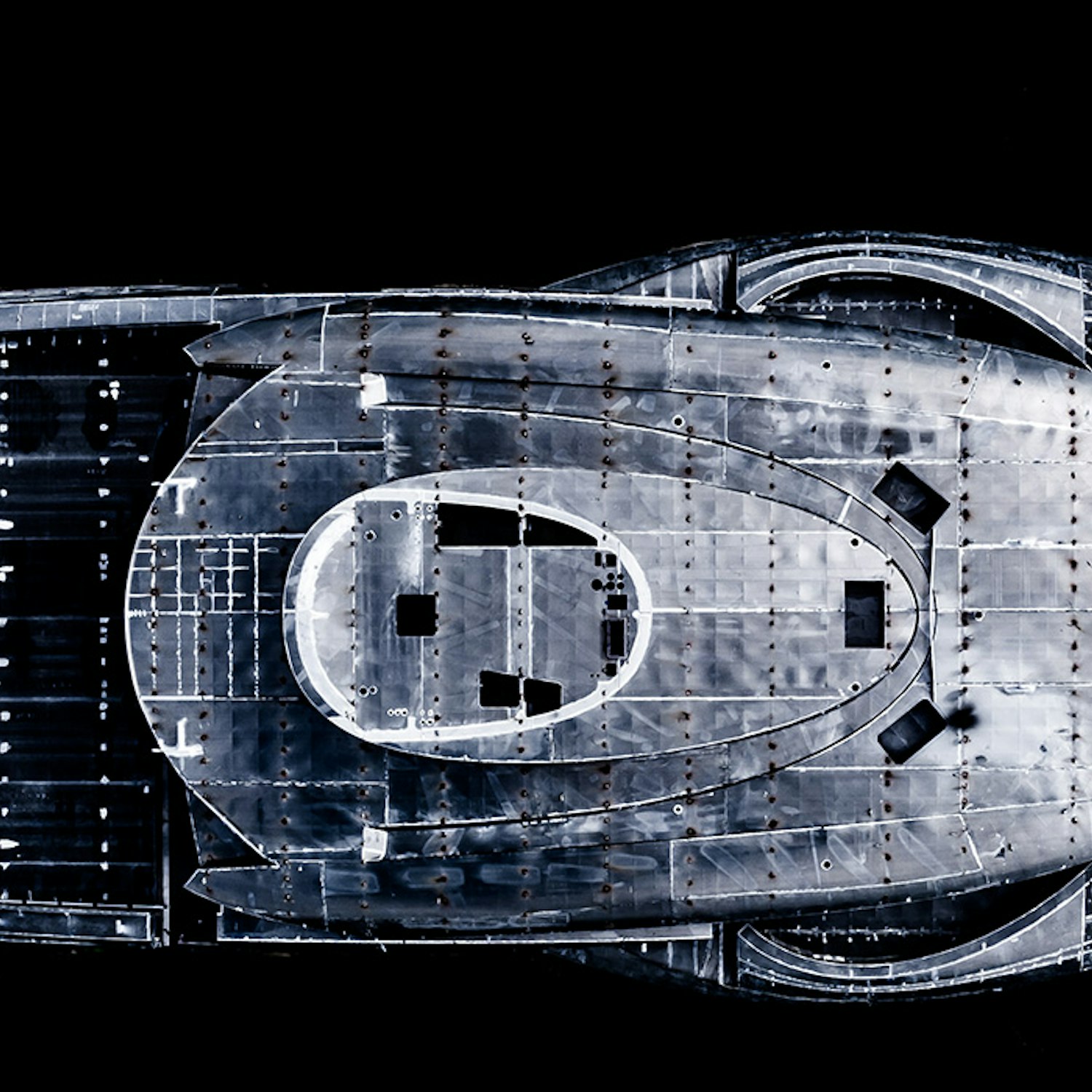
Our knowledge & expertise. It’s a smart investment
Yacht Construction & Build
With an experienced luxury yacht construction team comprised of former superyacht captains, engineers, and project management specialists, Moran Yacht & Ship has successfully negotiated, managed, and completed over $3 billion in new yacht-build projects. This incredible statistic is unmatched by any other brokerage company in the world.
- Luxury Yacht Construction
- Yachts Under Construction
- Completed Custom Yachts
Luxury Yacht Builders
- Contact Build Team
Why build with Moran Yacht & Ship?
Over the past 36 years, Moran’s yacht construction management team has been actively involved in successfully building over 60 of the finest quality new superyacht construction projects globally. Contact our new build project management team today to learn how we can help you build your next custom luxury yacht in partnership with the leading megayacht builders in the industry.

Discover how our yacht build process is different
Before the keel is even laid, our yacht project management team compiles an all-encompassing marine specification. We then negotiate a comprehensive yacht-building contract that protects our clients from delays and additional costs. We assemble an experienced yacht build team that includes only the best naval architects, interior and exterior designers, and project managers to bring your dream yacht to life.
Unlike many of our competitors, who disappear as soon as the yacht build contract is signed, our accomplished team will remain in place through final delivery to ensure a smooth yacht construction process and complete satisfaction. As a further courtesy to our clients, we remain with the vessel in a yacht management capacity to take care of any warranty items and ensure hassle-free day-to-day operations.

Completed Custom Yacht Construction Projects
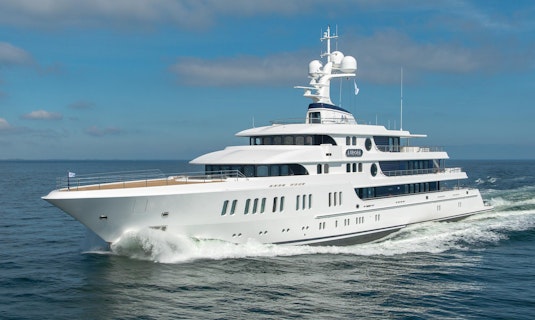
BLACK PEARL
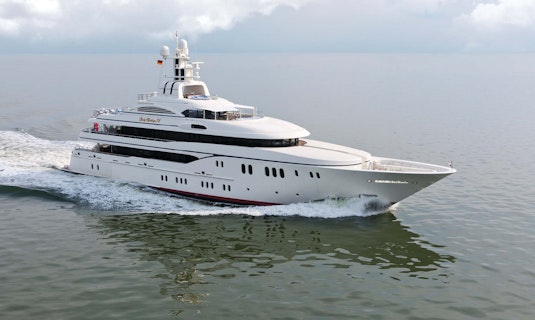
LADY KATHRYN V
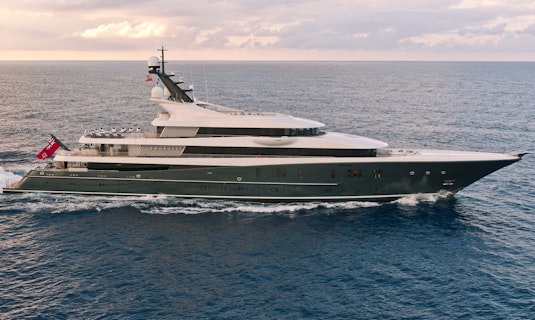
TOP FIVE II

View 47+ more Completed Projects
Our results speak for themselves.
Whether you are looking to build a semi-custom motor yacht or build a custom superyacht, you can be certain that the new yacht construction team at Moran Yacht & Ship has the experience, knowledge, and capability to deliver the boat build of your dreams. Our experience ensures that you will take delivery of your vessel on time, within budget, and to the highest quality standards.

Yachts Currently Under Construction
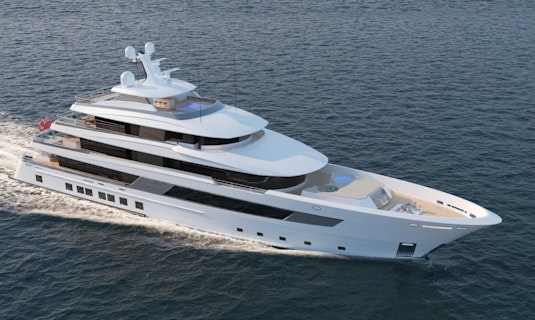
View 5+ more Projects under construction
Choosing the right yacht builder and shipyard is imperative for a successful new yacht construction project. Learn more about some of the builders our yacht project management team works with and recommends.
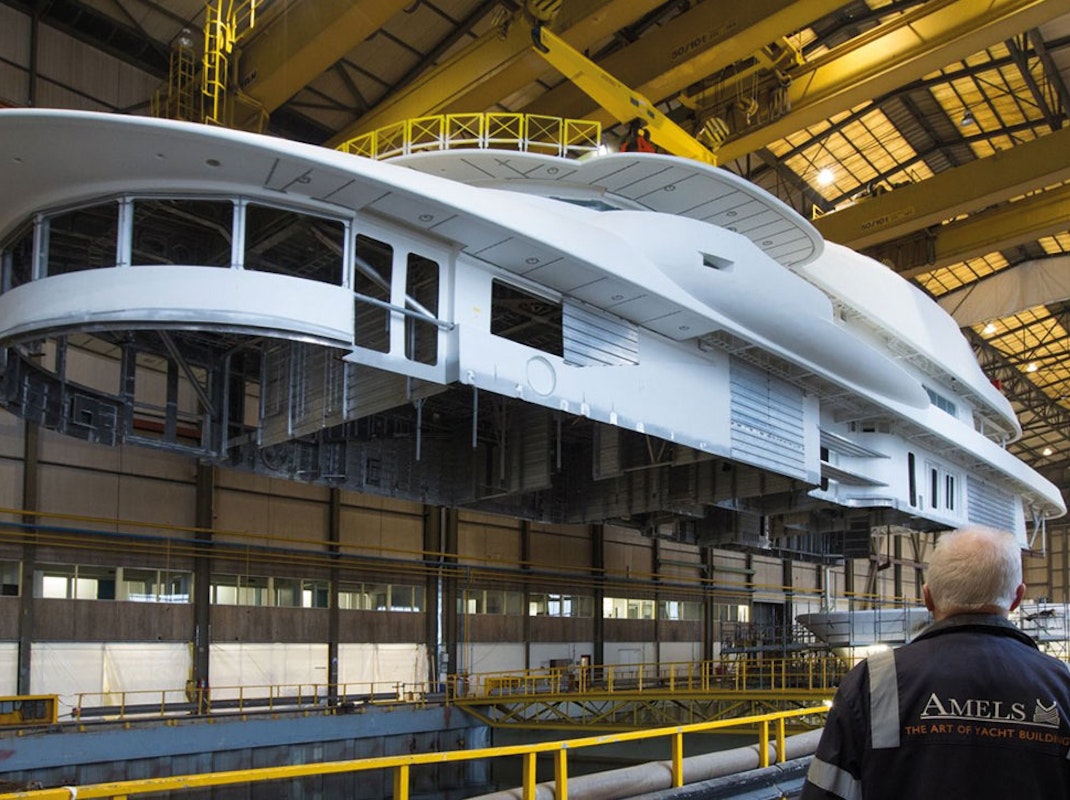
Yacht Construction FAQs
What support will moran yacht & ship offer me during my yacht construction.
The experts and brokers at Moran Yacht & Ship have been in the industry for a long time and oversee many superyacht construction projects. Their expertise will support you at every stage of the new build process, ensuring your exact requirements are met. This includes:
- Informed selection of builder and shipyard
- Choice of interior and exterior designer
- Development and negotiation of the technical specification
- Negotiation of the build contract and price
- Project management throughout the build process
What does it cost to build a yacht?
The cost of building a yacht from scratch is based on multiple factors, including the size of the vessel, materials used, the complexity of the design, technology, propulsion systems, interior design features, onboard amenities, and the shipyard and designers used. Expect building a luxury boat to cost anywhere from $2 million to more than $300 million. Working with an experienced new build project management team, such as the experts at Moran Yacht & Ship, offers a cost-effective solution by ensuring builds remain within budget.
What are the benefits of building a yacht as opposed to buying a used yacht?
There are multiple benefits to building a yacht as opposed to buying a pre-owned yacht. When you build your own yacht, you enjoy the benefits of a fully customized vessel to meet your precise requirements, from its naval architecture and size to its cruising capabilities, layout, onboard technology, amenities, and interior design. A custom yacht will be tailored to suit your lifestyle and desired experiences.
Also, when you build your yacht, you won’t have to worry about pre-existing conditions. A new build yacht will come fully warranted, providing protection from future mechanical repairs and providing complete peace of mind.
Finally, Moran Yacht & Ship ensures that building a yacht is indulgently fun. You will have the opportunity to collaborate with a team of highly experienced boat-building professionals to create something truly extraordinary, from sketch board to on the water. Nothing matches the thrill of building your own yacht with even the smallest details tailored to your precise requirements. Indeed, a custom yacht offers the ultimate lifestyle purchase.
What are the pedigree shipyards that Moran has built with?
- Lurssen Since 1875, the northern German shipyard has produced some of the finest vessels on the superyacht market. This pedigree shipyard is known for innovating and utilizing cutting-edge technology. Lurssen continually breaks records, including developing both the longest superyacht in the world (AZZAM) and the biggest luxury superyacht in the world (DILBAR).
- Amels This Dutch shipyard officially entered the yachting sphere with the superyacht KATALINA, now named LADY GEORGINA, in 1982. The luxury boat builder specializes in motor boats, constructing both full custom as well as their highly sought-after semi-custom Limited Editions yacht series.
- Oceanco Oceanco is a pedigree boat builder and industry pioneer based in the Netherlands. The shipbuilder is renowned for building award-winning custom vessels up to 200 meters, both motor yachts and sailing vessels. The Dutch shipyard specializes in building innovative, high-quality superyachts that push the boundaries of shipbuilding.
- Feadship Also among the world’s most notable superyacht manufacturers is Feadship, a full custom motor yacht builder known for its uncompromising pursuit of perfection. The pedigree shipbuilder is located in Holland and boasts a long history stretching back to 1949.
Moran Yacht & Ship boasts strong relationships with the world’s leading shipyards and has project managed some of the world’s most luxurious custom superyachts. Contact us today if you want to build a luxury boat.
What countries are known to have the best shipyards?
European countries, including the Netherlands, Italy, France, and Germany, dominate when it comes to the best shipyards, thanks to their rich maritime heritage, skilled craftsmanship, and use of exceptionally high-quality materials.
What are the current waiting times to build a yacht with the best shipyards?
Overall, the more prestigious the shipyard, the longer the waiting time will be. Current waiting times for some of the most prestigious builders are around 4 to 5 years.
How long does it take to build a yacht?
The build time for a yacht can vary significantly depending on the project’s size, specifications, and complexity. Generally, superyacht construction times at pedigree shipyards range from 36 to 39 months.
Our new construction team is known for delivering our client’s projects on time and within budget.
What are mega yacht hulls made from?
Megayacht hulls are typically made from fiberglass, aluminum, or steel, and the choice of material will depend on the budget, yacht design, and how the owner wishes the vessel to perform.
A fiberglass hull is known for its excellent sea-keeping capabilities and ease of maintenance.
Aluminum offers excellent strength and durability. As a relatively lightweight material, it also provides better fuel economy and enables a yacht to reach higher speeds.
Steel is an exceptionally strong and durable material with high resistance to abrasion, making it popular with ocean-cruising yachts, especially expedition vessels. However, it is heavier than fiberglass or aluminum, making it less popular with owners wishing to build a yacht where speed is a priority.
What makes a boat considered a yacht?
Overall, there is no standardized definition of what makes a yacht. Mostly, the term yacht applies to vessels over 24 meters, where regulations for ownership change as well. The term yacht can equally define a motor boat or sailing vessel. Additionally, terms like superyacht, megayacht, or gigayacht are often used to describe the most luxurious and largest ocean-going vessels.
Do I have to pay VAT on a new yacht?
As a moveable asset, whether you have to pay VAT – Value Added Tax – can be complex. Generally speaking, whether you have to pay VAT will depend on the country the owner is acquiring the yacht from and their country of residence. The VAT may also depend on the intended use of the vessel. Every country has different VAT rules and regulations. It is always a good idea to consult with a local tax professional with expert knowledge of the yachting industry to mitigate any potential tax liabilities.
What are financing options for yacht construction?
Building a new luxury boat can be an expensive endeavor and is a significant investment. Various financing options are available to those interested in purchasing or building a yacht. Financing typically involves one of three different solutions:
- Portfolio loans
- Private lenders
Bank loans are a popular option for financing a yacht construction. Many banks offer boat loans, which are similar to auto loans in terms of loan structure and required collateral.
Portfolio loans have become more popular for financing new construction projects. A number of institutions offer these and often have very favorable rates.
Private lenders also offer funding for boat construction. These lenders typically offer more lenient terms compared to banks. However, interest rates can be higher, and a larger down payment is often required.
How much does it cost to run a yacht per year?
The cost of running a yacht depends on many factors, including:
- Maintenance needs : they will also grow with the age of the yacht
- Size : the larger the yacht, the more crew is required
- Time spent cruising : fuel expenses increase with the cruising range
- Insurance costs
- Location : dockage and mooring fees will vary
Overall, a rule of thumb is that luxury yachts cost around 10% of their purchase price per year. This percentage is typically reduced slightly as the size of the boat increases.
Contact our New Yacht Construction Team
Are you considering building a new yacht? Contact our team today to learn how we will set you up for success.

Build a Yacht
Do you plan to build a yacht of your own.
If yes, read this guide on new yacht construction.
We will go through stages of a superyacht new build and discuss important points that every yacht owner or owner representative needs to know when commissioning custom yacht construction.
New Yacht Construction in a nutshell
Why build a yacht? The answer to this question is slightly different for every superyacht owner. One aspect is true for all: only a fully customized superyacht which was made specifically for you will perfectly fit all of your requirements and tastes.
If you are not satisfied with serial production yachts and seek that unique superyacht to call truly yours – then building a yacht is for you.
Superyacht build is an exciting process which only a handful of people in the world are lucky to experience.
There is nothing like seeing your own superyacht coming to life, first on paper in form of superyacht designer drawings, and then for real at the superyacht shipyard.
New yacht construction is a lengthly and sophisticated process which can take several years to complete. Thus it is very important for every superyacht owner to understand ins and outs to prevent unnecessary mistakes.
We at Yachtowner.co prepared a guide through superyacht build process for you. Let’s dive right in!
Build a yacht. Where to start
Why build a yacht.
Always start your superyacht new build process with why. The better you understand yourself, the easier it will be for superyacht professionals to satisfy your needs.
Why do you want to commission new superyacht construction? What drives you? How are you going to use your boat? What are your requirements? Sit down and make a list of things you would like to see at your new superyacht. Let your dreams flow and capture them on paper.
Look at your requirements and rate them. Group all your requirements into groups: “absolute must have”, “desirable”, “nice to have”. This grading will help yacht designers and shipyard understand your priorities and focus on the right things. Add information about numbers of cabins, speed, cruising range of your yacht, maximum noise and vibrations levels, and anything else which comes to your mind.
Save photos and descriptions of other yachts you like, including finishings type and quality. They will later serve as benchmark for a superyacht designer.
Try to describe the use of your boat in 1 or 2 sentences. A “floating home for my family”, a “fast and furious party boat”, or “an expedition vessel to explore arctic regions”? Give your new luxury boat your personal twist!
Successful yacht build starts with clear communication
By the time you decide build your own yacht, you should already have tried out chartering different yachts or owned some of second hand yachts.
As with anything else, in yachting it is also better to gain maximum experience, yachting knowledge and understanding of your needs, before you start your first large project.
How can you know what you want, if you don’t know which options are available? If you are just starting out in yachting, read our article How to Buy a Yacht .
Yacht design is all about compromises. Aiming to build the fastest boat, for example, implies limiting its overall weight. It means less additional lifestyle appliances on board.
To maintain the speed, a stronger engine is required, which means more fuel storage and less inside space. There are many examples of compromises like this.
Due to its high quality and sophisticated finishings, superyacht construction is much more labour intense than construction of any other type of vessel. Executing change requests gets expensive very soon.
Also, unlike in serial production of planes or cars and due to uniqueness of your boat, the shipyard does not have possibility to fully standardize the production process. Solutions can not be tested for various hundreds of times before the building begins. The shipyard just has one shot to get things right.
The more specific and detailed your understanding of your own preferences, the clearer and faster your communication about them, the better job your superyacht designer, architect and shipyard will be able to execute.
Superyacht Build: Choose the Right Team
You are about to sign a superyacht construction contract which will tie you into working with a shipyard for the next couple of years. Make sure you choose the right people! Superyacht building team can make or break the project.
In general, you will be working with a number of different experts from the superyacht industry during the next couple of years. They will surely have deep knowledge in their specific spheres of expertise.
Surrounding yourself with experienced professionals with no conflict of interest and simultaneously educating yourself on yacht building process will make you feel confident and comfortable in such a specific setting.
Always ask questions, clarify things you might not understand. Maritime industry is full of jargon. It’s ok not to know specific terms. It is much better to ask rather than to not be able to follow a discussion.
Professionals build the yacht for you, but in the end, it is your yacht. You want to make sure that you get the boat of your dreams and have enough knowledge on how it functions.
As a future superyacht owner, you probably already have your favorite yacht designers, naval architects and superyacht brands. If not yet, then check out our Comprehensive list of 195 Superyacht Brands to discover some of the world’s best superyacht builders.
How to Build a Yacht: Design Phase
Now when you already have put your first thoughts on paper, it’s time to make first contact with a superyacht designer and/or a naval architect.
A superyacht designer is responsible for creating an attractive and practical design for your future yacht. A naval architect is typically a professional engineer in charge of construction, design and repair of yachts.
If optical appearance and interior design is your focus, yacht designer might be appropriate to hire. If instead you want to incorporate non-traditional and sophisticated technical elements into your yacht, a naval architect is the right person to contact.
Take the list of your preferences that we discussed in the beginning of this guide and visit several superyacht designers and architects. Browse through previous yacht projects in their portfolios. Make sure that he or she has enough experience in designing similar types of yachts.
Choose two or three best companies. Ask them for preliminary drawings and estimates of fees, and compare. Choose the one who suits you best.
Then visit a superyacht insurance agent and a classification society surveyor . Yacht insurance decides whether the yacht is ready to launch. Classification society is an entity which monitors that the yacht is built according to highest standards and quality.
The surveyor checks if the shipyard builds your yacht to the best quality. It is in your interest to involve these two stakeholders already in the beginning of the process, to avoid unnecessary hassle from the start. Show them the first drawings and specifications of the new yacht that you got from the designer/architect, and ask how they work and what else they need.
Clarify yacht financing . The majority of privately owned superyachts are financed by some kind of a bank loan. It is a savvy financial decision to finance your superyacht by a bank loan.
By negotiating good loan conditions, you can keep your own cash and invest it into a better performing asset classes with higher returns. There is a number of financial institutions worldwide which specialize in superyacht financing.
Think about the flag of your future superyacht . In which country will it be registered? Will it be a Red Ensign Flag ? Choice of the country of registration will affect legal status of your superyacht, so choose carefully.
We cannot stress enough how a well-executed and detailed yacht design is crucial for the following yacht construction! Before starting to build a yacht, one needs to run a full check of all documents, specifications and plans. The better you prepare on this stage, the smoother the yacht building process will be.
Build a Yacht: Shipyard & Construction
The big decision alongside the choice of yacht designer and naval architect, is undoubtedly, the choice of shipyard . This is the manufacturer of your future custom superyacht. The shipyard plays an immense role and has responsibility to deliver your new yacht the way you want it.
Once the preliminary design of your yacht is ready, you can start looking for a suitable shipyard to build your yacht.
How to choose a shipyard to biuld a yacht? Which yacht brand is the best for you? Look out for the following points:
- Shipyard size
- Shipyard’s preferred size of yachts
- Years on the market
- Previous experience in building similar yachts as yours
- Delivery schedule
- Own design team
- Reviews of previous clients
- Resale value of yard’s previous yachts
- Project management skills
- Who is the project manager? Do our personalities fit well?
- Are processes in place?
- ISO standards & compliance
- Procurement department & policies in place
- Financial stability of the shipyard
- Do I have a good feeling with the shipyard?
There is quite a variety of shipyards in the world and it can become a daunting task to choose the best one for you. Send your inquiry to several shipyards, and narrow down your choice to 3-4 best ones based on their answers. Get more details and specifications from them and choose the best shipyard.
The shipyard will assign a project manager and a team to run the building of your new custom superyacht.
The project manager is an employee of the shipyard and is the key person who runs the construction of your yacht. His task is to project manage the build, to make sure everything sticks to schedule and there is no significant cost overrun, and to maintain communication with the owner’s representative.
Cooperation between project manager and owner’s representative is key in successful superyacht construction. Whereas the owner’s representative has power to act on owner’s behalf, the shipyard’s project manager is the one who runs the show on shipyard floor.
Visit the shipyard personally and talk to the general manager and the potential project manager (the latter reports to the former).
Take a look at the facilities. Try to find out how the processes at the shipyard are managed. Are proper project management procedures established? Are processes structured and responsibilities clear?
The better the organization of shipyard’s work, the more likely is your new custom yacht to be completed up to your expectations. One of the ways of finding it out is asking for previous client’s opinions. Ask the shipyard if they can share such contacts with you.
The team will prepare a project plan and a project schedule. After that the execution will start. This is a long, sophisticated but a very exciting process, when you will finally see your yacht materializing.
It is good practise to have a yacht engineer or captain who will be working on the yacht after completion to be part of the team during construction. His detailed knowledge of the new yacht will be invaluable for its daily operation after the handover.
Visit the shipyard once in a while and take photos of different stages on construction. What exciting memories to look back at!
During the yacht construction phase, you are likely to submit some changes. Some issues might arise. But don’t get demotivated, it is normal with a project of such scale.
Proper execution control mechanisms and processes will allow your team to identify potential issues at early stages, while it is still relatively easy and cheap to fix them.
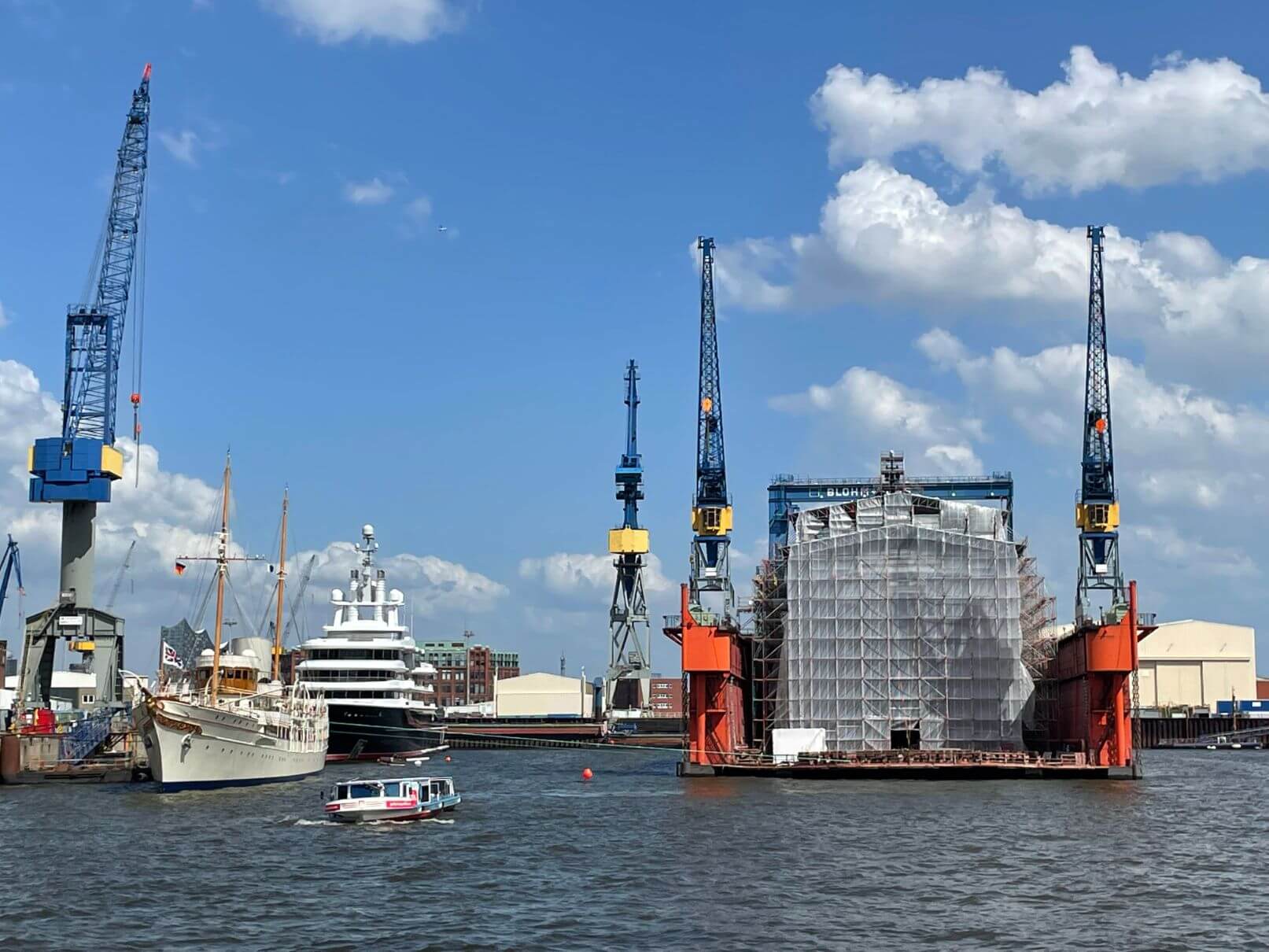
Build a Yacht: Sea Trials & Closing
Finally the construction of your custom superyacht is completed. We know you can’t wait to see your beauty on water!
Launching is the day when your new yacht is put in the water for the first time. It is an exciting and very important moment, which needs to be carefully planned by the shipyard.
Now the yacht needs to be tested in action. This is a period of sea trials . For several weeks, all systems of your new yacht will be tested in operation. This is the final complete technical check of your new luxury boat. Some fixes might be done during this period.
As with a brand new car, some systems on the yacht will take longer time to be fully tested in action. Some fine tunings will surely also be done during the first and second years of your superyacht’s lifetime. It is absolutely normal.
Handover is the final stage of yacht construction project. This is when you sign the final acceptance of the yacht, probably with a list of things which still need to be fixed in the upcoming weeks.
With the handover of the yacht, also all its documentation has to be handed over to you or your team. This includes all the plans, drawings, sea trials results, manuals to all the systems and appliances on board.
Your crew has to have access to all these documents to be able to comfortably transition to the new build yacht.
Give your captain and crew some time to accommodate onboard and get accustomed to the new yacht.
Now you are finally ready to make the first voyage on your new custom superyacht , the moment you have been waiting for so long.
Congratulations!
Build a Yacht: Contract is King
Yacht construction documentation.
When it comes to building a yacht, paperwork matters. With such a large project, all the parties involved are interested in having everything clarified on paper before yacht construction starts.
Unclear or conflicting conditions, missing clauses, mess in communications and emails can substantially complicate building of your yacht. As well as make it much longer and more expensive.
Work with lawyers that have been working with yacht building projects before. They will advice on how to setup contracts, which paragraphs and attachments to include.
You should have the following documentation package: contract, scope of work, technical specifications, terms and conditions, regulations, contract drawings, classification rules, standards, and execution page.
Due to the nature of new yacht construction projects, roles and responsibilities of different stakeholders can overlap. Best practice is to include description of roles and responsibilities of every stakeholder in an attachment to contract, to avoid confusion.
Make sure you understand every clause in the contract personally. The language might be very specific, but knowing what you sign is absolutely crucial, even if you trust the professionals you hired.
In the end, you are the owner and end beneficiary. It is your yacht and your money, you should know what you are signing for.
Keeping all documentation saved and filed properly might be boring, but it is so important! With a project of such magnitude, paper chaos can come quite fast.
Shipyard will file documentation on their side, but your representative should also have own filing system to make sure you have all papers at hand.
Also, after the yacht construction is completed, as-built documentation shall be handed over to you.
Making changes while you build a yacht
Trust us, no matter how well you planned your new custom yacht in advance, you will want to change at least something later.
Change orders and how they will be handled in the building process are an important part to put down in the contract. Having clear rules on how change orders shall be handled and paid for will significantly ease the process. Make all your changes in writing as an attachment to the contract.
Generally, the fewer change orders you make, the better. The sooner they come during the yacht build, the better. They will also be considerably cheaper to implement.
Just think of how much will need to be redone, if you decide to make changes in hull structure once the yacht is almost finalized, interiors are finished etc.? It might be cheaper to build a second yacht…kidding, but you get our point.
Superyacht Construction: Comfort Onboard
Stabilizers.
Comfort on board of your yacht is central to enjoyment of trips and cruises! Seasickness is sadly something that many people get and it can ruin any vacation. No matter how luxurious a yacht, it is still moving in water, and at least some minimal motion will always be there.
Solution to seasickness are stabilizers. If you are sensitive to motion on water, make sure your yacht has a good stabilizer. It will make a great difference in your yachting experience.
There are many stabilizing systems of varous types on the market. Talk to your team at the design stage and later ask stabilizer manufacturer to provide a motion simulation study.
Noise & Vibration
Not so obvious aspect for new yacht owners are noise & vibration levels outside and inside your yacht. We love the speed that strong engines give – but they are loud. Engines cause noise – and so do propellers, generators, bow thrusters, hydraulics, gearbox…
Work with a good noise level specialist when constructing your yacht, to make sure that noise does not exceed your tolerance level. It is much easier and cheeper to minimize noise already during design and construction of your yacht.
Ideally, use another yacht as a reference point for setting acceptable vibration and noise levels. Test it at the dockside and during cruising. When the yacht is moving, you will hear not only the engine noise, but also sound of waves hitting the hull, wind, propellers.
Specify maximum sound levels in every cabin in the yacht building contract. Most people prefer to have at least some noise level in the cabins, not to feel too locked out of their environment. Also, getting below specific levels gets very expensive, and will probably be unnecessary.
Superyacht Build Success depends on Yacht Owner’s Involvement
Yes, as the future superyacht owner you also have an important role to play in superyacht construction. Only with your active involvement in the project, can the yacht designer and shipyard get all the important information and approvals in time and deliver great results.
Only by knowing what a perfect yacht means specifically for you, can they build this perfect yacht.
If the personal time you are willing to spend on the project is very limited, hire a knowledgeable representative.
Owner’s representative is a key stakeholder in a new yacht build, alongside shipyard’s project manager. Owner’s rep is the major contact point for all the other stakeholders. Make sure he or she has necessary experience, knowledge and power to represent you and make decisions on your behalf.
Yacht owner’s representative should be on pulse of construction schedule, cost, and current stage of the building process. Cooperation between the owner’s representative and the shipyard’s project manager is a key relationship in any superyacht new build.
In short: completing a successful superyacht build is only possible with active cooperation from the owner’s side. There are quite a number of new build projects that run into issues due to lack of owner’s participation.
New yacht construction is your biggest dream coming true, it’s fun to take active part it in!
Yacht Construction: Frequently asked questions
What does a custom yacht mean.
A custom superyacht means a yacht which is designed and build specifically to your requirements. A custom superyacht is unique. If you commission building a custom yacht, there will be no other yacht like yours in the world.
How long does it take to build a yacht?
Superyacht construction times vary depending on the size and complexity of the boat . It can take anything from 2 to 5 years to complete building of a custom superyacht.
How much does it cost to build a yacht?
New build custom made superyachts are more expensive than serial production or semi-custom yachts. Their prices can go up to several tens of millions of dollars on average. Exact price range depends on the yacht size, complexity and finishings. The largest yachts in the world cost considerably more than a hundred million dollars, reaching over a billion dollars for the most expensive ones.
Who is involved in a superyacht build?
Yacht owner, owner’s representative, superyacht designer, naval architect, shipyard (full team typically led by a project manager), lawyers, insurance agent, superyacht financing specialist, classification society surveyor, possibly superyacht broker , superyacht captain & crew, to name the main stakeholders.
What are the best superyacht manufacturers in the world?
There is quite a number of prominent shipyards with expensive experience of building superyachts in the world. The exact choice will depend on the size of yacht, your preferences, budget and taste. With superyacht manufacturers, there is no one size fits all, but there are market leaders. Browse through our Comprehensive list of 193 Superyacht Brands to choose your favorite.
Summary: Build a Yacht
In this article, we discussed new superyacht building process from the yacht owner point of view. We highlighted main points you should keep in mind to avoid common mistakes during yacht commissioning and construction.
It is beyond the scope of this article to list all the important aspects of building a yacht. Hiring an experienced superyacht consultant will significantly ease the yacht build for you.
Get the best superyacht professionals onboard, stay curios and ask questions. With every completed yacht new build you will gain your own experience and know your yachting needs better. We know some serial yacht owners who complete a new yacht build project every couple of years. It’s fun!
And last but not least: building your own superyacht is such a unique adventure, which only few people get to experience. The absolutely main thing is to enjoy it to the fullest!
Do you have questions we have not covered?
Ask us in the comments below, or contact us directly at [email protected] ! We will define your needs and find the best solution together!
Article by Yachtowner.co
More Articles

Yacht Ownership Cost
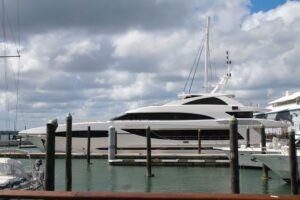
Superyacht Management

Superyacht Websites List
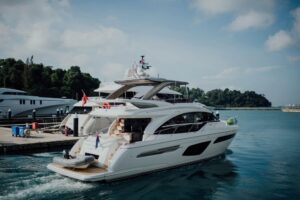
Should I Buy a New or a Used Yacht?
Leave a reply cancel reply.
Your email address will not be published. Required fields are marked *
Save my name, email, and website in this browser for the next time I comment.
Yes, add me to your mailing list
Privacy Overview
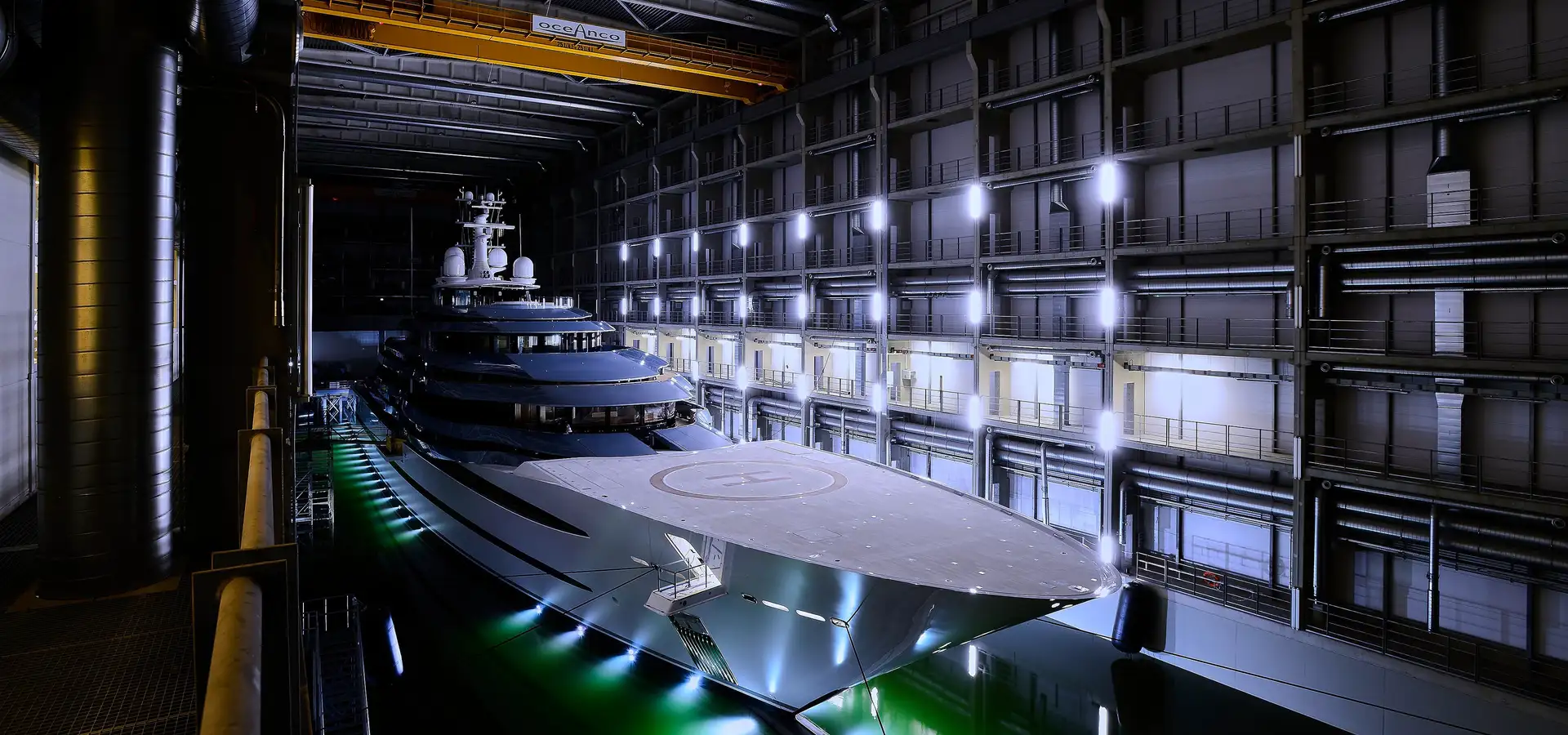
Why build a yacht with Burgess?
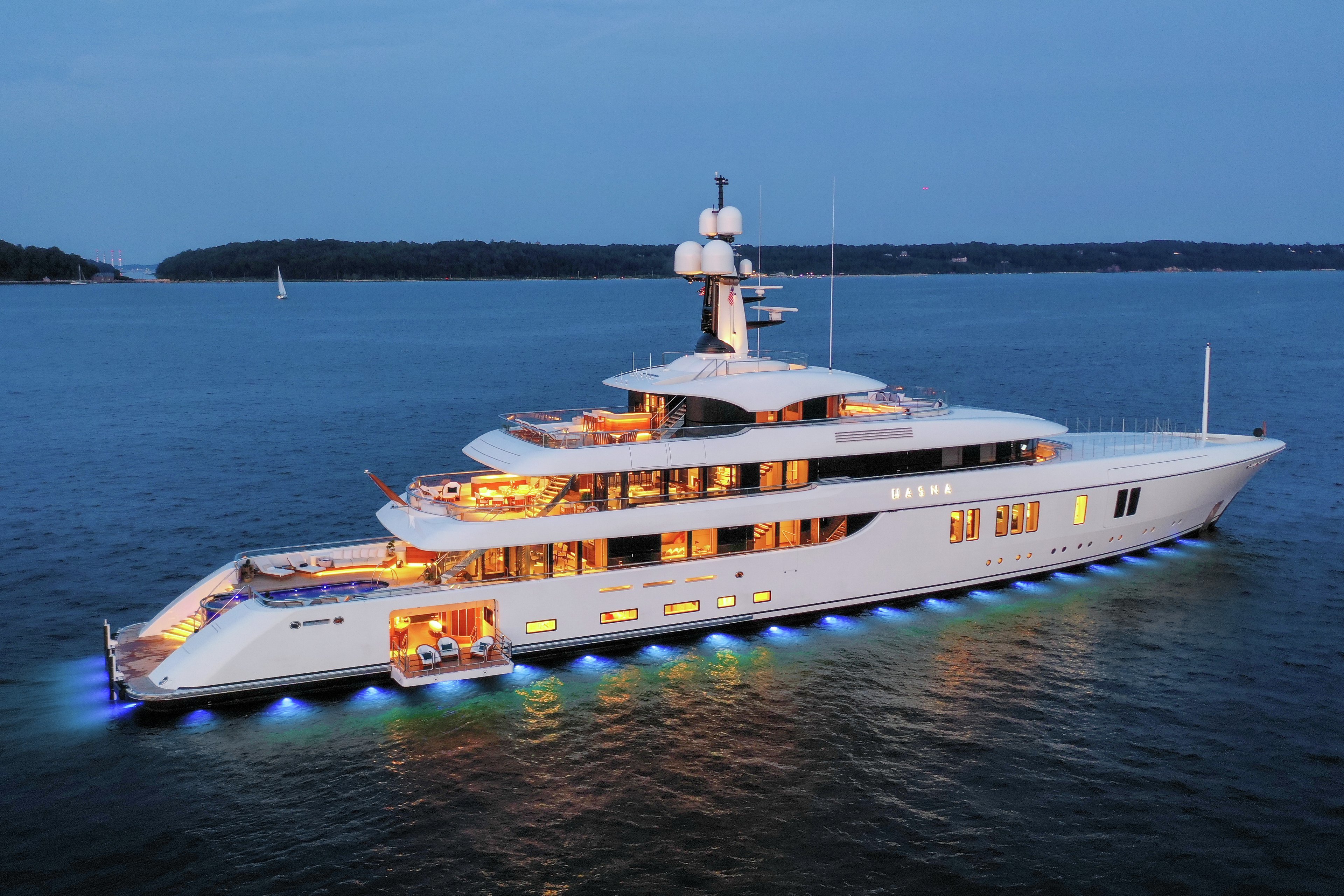
Build a yacht
Discover the Burgess difference
Commissioning a bespoke superyacht is an exhilarating yet complex journey. With multiple decisions to make along the way, we guide you from your initial vision to maiden voyage and beyond.
We share your vision to achieve the remarkable
We reduce the risk and increase your enjoyment. Whether seeking a fully customised vessel or looking at the latest semi-custom platforms, our highly-skilled Technical Services team provides decades of experience and expertise, working together with you to realise your dream.
Dedicated in-house team working on your behalf
Every project offers a unique set of challenges, and for each we offer the complete range of technical, engineering and project management services in‐house, collectively serving as your personal project consultant. We have every angle covered, every step of the way.
Providing an unforgettable build experience
From vision to design brief to build, sea trials and delivery, we continue to be involved throughout the agreed construction period, offering peace of mind and a single point of contact. Your dream, our knowledge, one unique result.
- Delivered yachts
We successfully deliver more yachts in the 30-180m and over market than any other new construction team in the world.
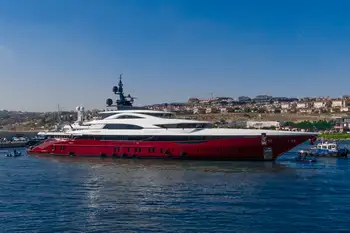
- Length: 80.1m (262.8ft)
- Built: 2023
- Bilgin, Turkey

- Length: 87m (285.4ft)
- Built: 2020
- Lurssen, Germany
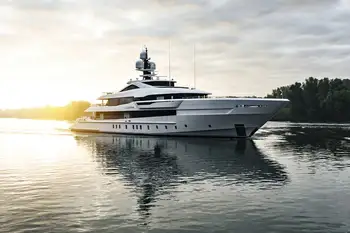
- Length: 60.6m (198.8ft)
- Built: 2022
- Heesen, The Netherlands
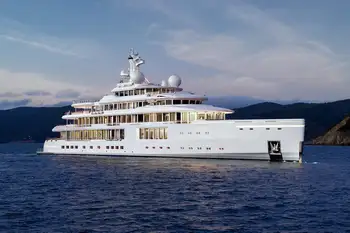
- Length: 107.6m (353ft)
- Benetti, Italy
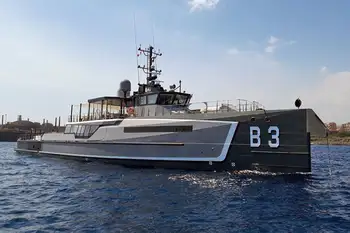
- Length: 57m (187ft)
- Built: 2019
- Damen, The Netherlands
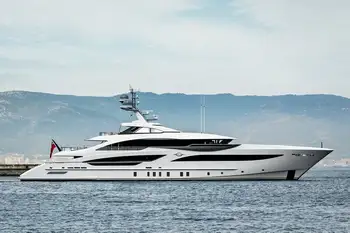
- Length: 56m (183.7ft)
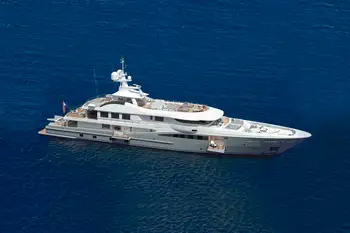
- Length: 55m (180.4ft)
- Amels, The Netherlands
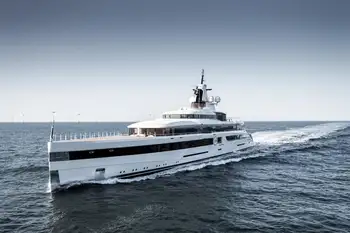
- Length: 93m (305.1ft)
- Feadship, The Netherlands
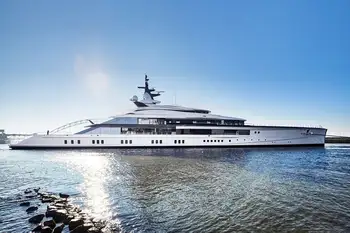
BRAVO EUGENIA
- Length: 109m (357.6ft)
- Built: 2018
- Oceanco, The Netherlands
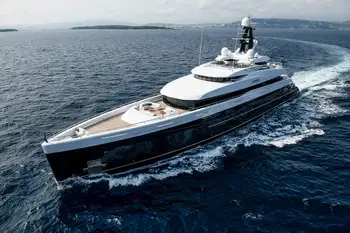
- Length: 74.5m (244.4ft)
- Abeking & Rasmussen, Germany
You've viewed 10 of 47
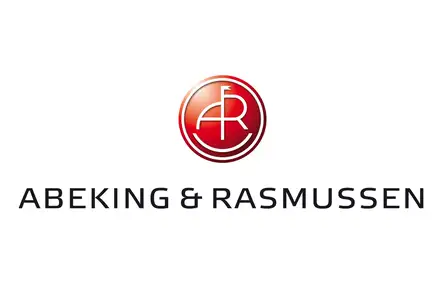
Abeking & Rasmussen
Founded in 1907, Abeking & Rasmussen is globally renowned for producing high-quality custom motor yachts from 45-125m.
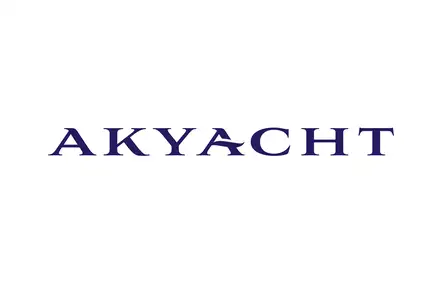
AKYACHT is an ISO 9001, Lloyd's-certified shipyard in Turkey. Its first breakthrough project was the spectacular 85m VICTORIOUS, the biggest superyacht ever built in Turkey.
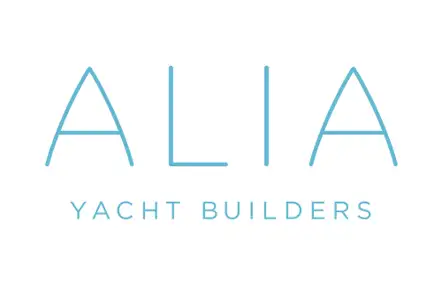
Alia Yachts
Alia Yachts was founded in 2008 in Antalaya, Turkey. Its Lloyd's certified facilities are equipped for cutting edge yacht construction in carbon reinforced composite, steel and aluminium up to 80m.

Established in 1854, Cantiere Baglietto Spa specialises in the construction of new planing aluminium yachts between 35-50m in length, and steel and aluminium displacement superyachts over 40m.

With three facilities spread across Viareggio and Livorno in Italy, and rich brand heritage, Benetti is a leading light in the production of 35-70m superyachts.

Cantiere delle Marche
The Ancona-based Cantiere delle Marche (CdM), founded in 2010, builds 26-48m explorer yachts in steel and aluminum. CdM is the No.1 expedition yacht builder worldwide for the third year running.
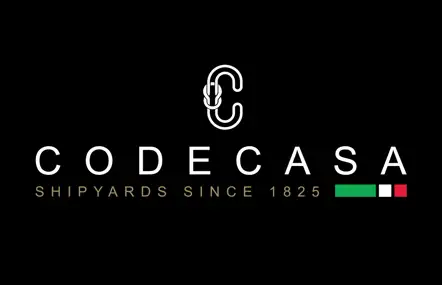
With origins dating back to 1825, Codecasa is a family company specialising in the building of large yachts in steel and aluminium up to 72m in length and fast motoryachts up to 50m in length.

CRN Shipyards
Founded in Ancona in 1963, CRN yachts are often characterised by a distinctive pointed bow, which has become something of a signature for this Italian yard.

Custom Line
Founded in 1996, brand of Ferretti Group and based in Ancona, Italy, Custom Line designs and builds planing and displacement yachts in composite from 30-42m in length with over 250 yachts delivered.
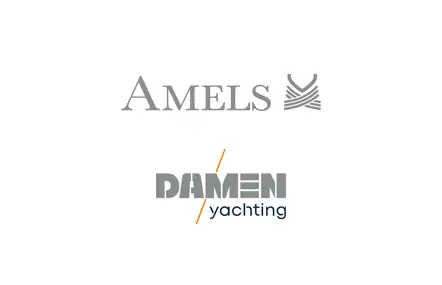
Damen Yachting
Damen Yachting is the master yacht builder behind more than 100 Amels superyachts, SeaXplorer expedition yachts, yacht support vessels and major yacht refits.

Delta Marine
Located in Seattle, Washington, Delta Marine has a worldwide reputation for producing custom-built luxury yachts of up to 100m in length.

Based in the Netherlands and with roots dating back to 1849, Feadship is recognised as the world leader in the field of pure custom superyachts.

Fincantieri
Fincantieri Yachts, part of the leading Western shipbuilder Fincantieri, is a world leader in both superyacht and cruise ship design and construction.

Heesen Yachts
Renowned for its innovation, Heesen is the world leader in aluminium construction, and dominates the 50-60m semi-custom market.

Located in Ancona, ISA Yachts builds luxury superyachts from 44-80m in steel, aluminium and fibreglass.

Lürssen
Based in Germany, Lürssen is the leading shipyard for large luxury yacht building as well as refit of yachts from 50-200m.

Mariotti Yachts
Mariotti is a world leader in the fields of ultra-luxury cruise shipbuilding, superyachts and supply vessel construction.
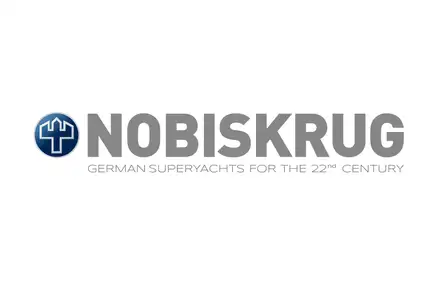
Located in Northern Germany, Nobiskrug has built over 750 seagoing vessels, delivering a select portfolio of custom superyachts including the 143m Sailing Yacht A.
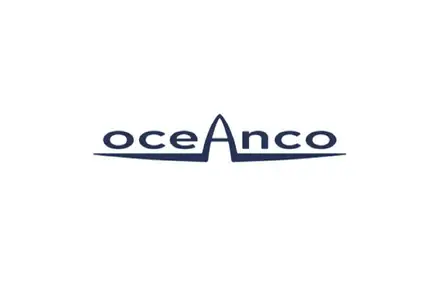
Oceanco builds award-winning large custom yachts, such as the 106.7m Black Pearl, the world's largest and most sustainable sailing yacht, and the 110m Jubilee, the largest Dutch-built yacht.

Pendennis is a world-class custom build and refit yard in Falmouth, UK, specialising in luxury sail and motor yachts between 30-100m.

Perini Navi
Renowned for pioneering automation and furling systems in large sailing yachts, Perini Navi today builds both sailing and motor yachts, most famous of which is MALTESE FALCON.
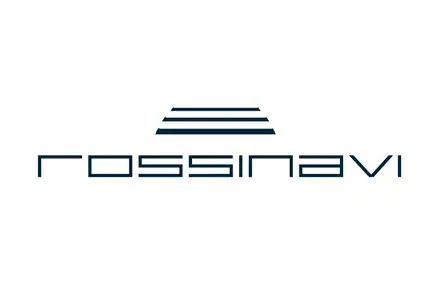
Established in 1980, Rossinavi builds custom superyachts between 40-70m in four locations between Viareggio and Pisa.
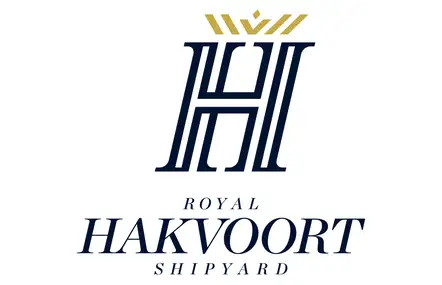
Royal Hakvoort
A family shipyard since 1919, Royal Hakvoort builds luxury yachts in steel and aluminium up to 65m in length.

Royal Huisman
A family-owned shipyard established in 1884, Royal Huisman specialises in the build and repair of custom luxury sailing yachts, as well as motor yachts.

Founded in 1958, Sanlorenzo builds a limited number of high quality, made to measure superyachts at its shipyard in La Spezia, Italy. Today, Sanlorenzo ranks highly among builders of Superyachts over 40m.
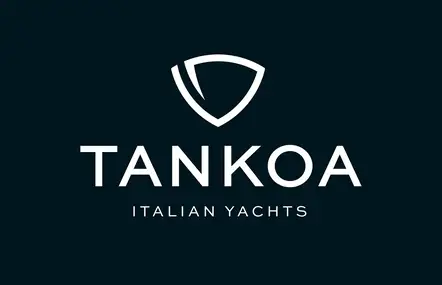
Tankoa Yachts
Tankoa specialises in semi-custom and custom yachts of 50-90m with Northern European quality and Italian DNA for design and flexibility.

The Italian Sea Group
TISG operates in the new-built industry with the brands Admiral (yachts over 50m) and Tecnomar (yachts up to 45m) while it works in the refitting industry with the brand NCA Refit (yachts over 60m).

Turquoise Yachts
Turquoise Yachts (formerly known as Proteksan Turquoise) is a builder of custom power and sailing superyachts, and Dr. Al Barwani, owner of Oceanco, recently became the majority shareholder.
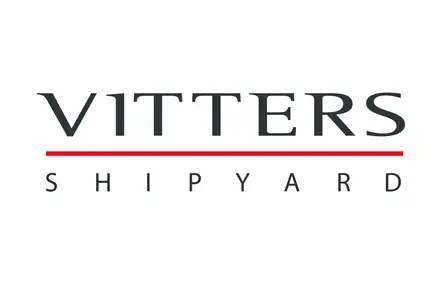
Based in Zwartsluis, The Netherlands, Vitters has established a reputation for delivering sailing yachts of uncompromising quality and innovative design.
- Yacht designers

Bannenberg & Rowell Design
A luxury yacht and jet design company based in London’s Fulham. Headed up by Dickie Bannenberg, son of the great Jon Bannenberg, the studio is renowned for creative, contemporary and approachable design – both interior and exterior.

Espen Oeino
Under the leadership of the eponymous Norwegian naval architect, Espen Oeino International has been designing iconic superyacht interiors and exteriors since the 1990s. Based in Monaco the studio has worked with Burgess on several projects, most notably the 72m Trinity Yachts-built ALBATROSS and the 156m Lurssen DILBAR, the largest yacht afloat by volume.

H2 Yacht Design
Jonny Horsfield established H2 Yacht design in London in 1994. Today it is a multi-disciplined exterior and interior styling team that has earned a reputation for challenging conventions in yacht design. The studio has so far collaborated on five projects with Burgess, most recently with Heesen.

Harrison Eidsgaard
International yacht designers and architects, Harrison Eidsgaard Design is headed up by its three partners, Peder and Ewa Eidsgaard and Ben Harrison. Undertaking both exterior and interior styling, the studio’s most notable yachts to date include the award-winning TANGO and ELANDESS, the latter being the studio’s first project with Burgess.

Jonathan Quinn Barnett leads a talented team of award-winning yacht designers. Established in 1995, the studio has created original exterior yacht designs and interior architecture for discerning clients in the luxury marketplace. With a critical eye on proportion and detail, designs of distinction associated with Burgess include the interior of OCTOPUS and popular charter yacht MUCHOS MAS.


Michael Leach Design
Established in 1997 by Mick Leach with Mark Smith joining in 1999, MLD is an multi award-winning design practice specialising in marine, aviation and residential projects. With over 60 years’ industry experience collectively, having worked in various top design offices, MLD is now established as one of the industry’s leading and most successful design offices.

Reymond Langton Design
Headed up by design duo Pascale Reymond and Andrew Langton, the London-based studio was founded in 2001. The studio has since delivered 28 motor and sailing yachts, including the 134m SERENE, the largest yacht built in Italy at that time. Originally based in London, the studio’s HQ has since moved to the historic city of Bath.

Situated in the stunning surrounds of Beaulieu in the New Forest, RWD is best known for the design of superyachts such as motor yacht HASNA and sailing yacht TWIZZLE. Founded in 1993, RWD has to date completed six collaborative projects with Burgess.

Sorgiovanni Designs
Established by yacht designer Sam Sorgiovanni in 1997, the eponymous design studio is based in Perth, Australia, and undertakes both exterior and interior designs. The studio’s unique location lends a point of difference to its body of work and it has become well-known for designing superyachts with an exotic feel, as well as great attention to detail.

Terence Disdale Design
Terence Disdale Design is an award-winning design studio located in London, and responsible for the interior and exterior design of the some of the world's most significant yachts. Renowned for a ‘beach house’ style, the studio’s most notable yachts include ECLIPSE and PELORUS, and it has no fewer than 10 collaborative projects with Burgess to date.

Tim Heywood Design
A multi-award-winning exterior yacht designer, Tim Heywood Design has produced some of the largest yachts on water, including the 133m AL MIRQAB. Located in Hampshire, the eponymous yacht designer cut his teeth under the guidance of Jon Bannenberg and in the 40 years since has completed six collaborative projects with Burgess.

Winch Design
A full-service award-winning British design and architecture studio specialising in the exterior and interior styling of motor and sailing yachts, aircraft, residential and commercial properties, Winch Design was established in 1986 and has to date completed seven collaborative projects with Burgess.
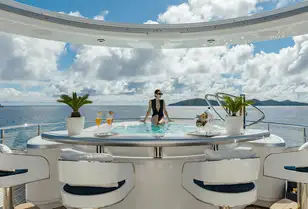
Superyacht interior design ideas
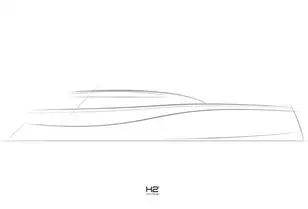
Burgess and Alia Yachts collaborate on their first new build yacht project together
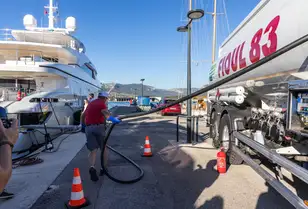
Looking into future fuels

Thanks to you, Burgess nears its 49th year on a high
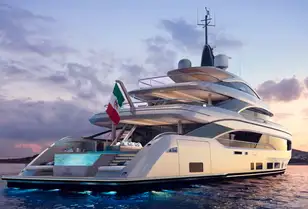
The smart way to build a semi-production yacht
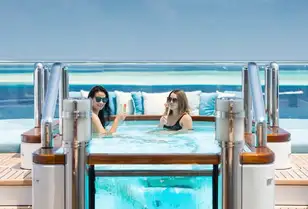
Some of the best luxury yachts with pools
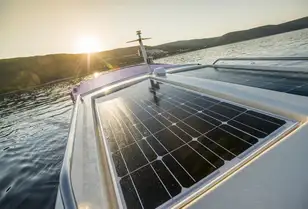
The rise of eco yachting

The essential yacht interior accessories
Sign up to our newsletter, stay in the loop.
Subscribe to our newsletter to keep updated with all things Burgess.
What would you like emails about?
- Chartering a yacht
- Buying or selling a yacht
- General superyacht news
In order to understand how we use and protect your personal information, please read our privacy policy .
- Mediterranean
- French Riviera
- Corsica & Sardinia
- The Balearics
- Croatia & Montenegro
- The Bahamas
- Caribbean - Leeward Islands
- Caribbean - Windward Islands
- British Virgin Islands
- US Virgin Islands
- New England
- Indian Ocean
- South East Asia
- French Polynesia
- The Red Sea
- Motor yachts for charter
- Sailing yachts for charter
- Latest offers
- Destinations
- New to charter
- Meet the Charter team
- Superyacht videos
- 360° yacht tours
- Corporate & event charters
- Inspiring charter ideas
- Charter FAQs
- Every day different
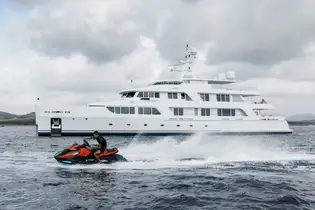
Charter KADIMO'S
Available between 10 June - 10 July
Elevator serving lower to sun decks means the boat can accommodate all generations
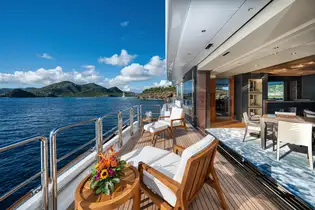
Charter BARBARA
Available 1-12 July and August onwards
Spa facilities including massage and beauty rooms, private master deck and indoor and outdoor cinemas
- Motor yachts for sale
- Sailing yachts for sale
- Yachts for sale over 200 feet
- Yachts for sale from 150 to 200 feet
- Yachts for sale under 150 feet
- Tenders and chase boats for sale
- Yachts under construction
- Meet the Brokerage team
- Berths for sale
- Sold yachts
- Yacht marketing
- New Build Sales
- Refit a yacht
- Meet the Technical Services team
- Meet the Yacht Management team
- Crew vacancies
- Meet the Crew Services team
- Procurement Services
- Charter Management
- Sales Management
- Yacht Marketing
- Meet the Insurance team
- 360 degree yacht tours
- Boat shows and events
- Office vacancies
- Talent pool
- Office locations
- Burgess in Asia
- Burgess Blue Oceans
- Strategic partners
- Press centre
- Company Operations
- Crew Services
- New Business
- Technical Services
- Yacht Management
- Burgess Impact Report 2023
Filter your results
- Yachts for charter
- Yachts for sale
- Frank Magazine
- Denison History
- Virtual Tours
- Alaskan Yachts
- Azimut Yachts
- Back Cove Yachts
- Beneteau Yachts
- Benetti Superyachts
- Bertram Yachts
- Boston Whaler
- Broward Yachts
- Buddy Davis Sportfish
- Burger Yachts
- Cabo Yachts
- Carver Motoryachts
- Center Console
- Chris-Craft Yachts
- Cruisers Yachts
- DeFever Trawlers
- Dufour Sailboats
- Fairline Yachts
- Feadship Yachts
- Ferretti Yachts
- Formula Yachts
- Fountaine Pajot Cats
- Grady-White
- Grand Banks Trawlers
- Hargrave Yachts
- Hatteras Yachts
- Hinckley Picnic Boats
- Horizon Yachts
- Hydra-Sports
- Intrepid Boats
- Jarrett Bay Sportfish
- Jeanneau Yachts
- Kadey-Krogen Trawlers
- Lazzara Yachts
- Luhrs Sportfish
- Marlow Yachts
- Maritimo Yachts
- Marquis Yachts
- McKinna Motoryachts
- Meridian Yachts
- Midnight Express
- Mochi Craft
- Neptunus Motoryachts
- Nordhavn Trawlers
- Nordic Tugs
- Ocean Alexander Yachts
- Offshore Yachts
- Oyster Sailing Yachts
- Pacific Mariner Yachts
- Palmer Johnson Yachts
- Pershing Yachts
- Prestige Yachts
- Princess Yachts
- Pursuit Yachts
- Riva Yachts
- Riviera Yachts
- Sabre Downeast
- San Lorenzo Yachts
- Sea Ray Boats
- SeaVee Central Consoles
- Selene Trawlers
- Scout Yachts
- Sunseeker Yachts
- Tiara Yachts
- Trinity Superyachts
- Viking Yachts
- Westport Yachts
Building A Custom Superyacht [Complete Newbuild Guide]
![yacht building cost Building A Custom Superyacht [Complete Newbuild Guide]](https://cdn.denisonyachtsales.com/wp-content/uploads/2019/07/Building-A-Custom-Superyacht.jpg)
July 25, 2019 11:40 am
The process of building a large yacht explained.
Placing an order for the build of a large yacht is no small undertaking. It is likely the result of a lifetime—perhaps even generations—of wealth building for such a purchase to become an option. When the time comes, how does the client start the process and where does he or she look for suitable partners? The maritime world is famously full of jargon, and the luxury yacht business is no different. Brokers , naval architects, interior designers, class societies, custom yachts, production yachts, flag states, owner’s supply, surveyors, shipyards, subcontractors, builder’s risk insurance , project managers, tank testing . . . you catch my drift.
Thought-through decisions and complicated contracts should certainly be anticipated, but as a wise man once told me about yachting, “At the end of the day, it’s all about cocktails on the beach.” While the dream of being on the water waits at the end of a newbuild process, building a yacht should be an enjoyable and rewarding process in itself.
- Newbuild Process Overview
- Latest Trends In Yachting
- Newbuild Partnerships
- Flexibility
- Project Management
- Newbuild Projects For Sale
- What Sets One Builder Apart from Another?
- What Sets A Brand Apart?

NEWBUILD PROCESS
“Production” Yachts tend to be in the smaller range and the process will likely be simpler than for a custom build. With a finished product already in inventory and available, only minor interior design elements need to be added per the client’s choice. A number of yacht builders will begin building larger yachts in anticipation of finding a buyer later, offering “semi-custom” as an option for elements of the interior layout and design.
For the custom build, the process will look something like this:
Vision > Design > Contract > Build > Sea Trial > Delivery > Cocktails on the Beach
The above is an intense simplification. Each stage involves multiple levels of experts and support staff. The client will want to surround him or herself with qualified attorneys, technical advisors, and translators of the jargon. One other important element to mention is that the design and build contract cost will not be the only outlay required to reach the endpoint. Custom yacht contracts mostly do not include items known as “Owner’s Supply,” i.e. tenders and water toys, audio-visual/entertainment systems, loose furniture, tableware, and more. Each of these will need to be procured, stored, insured, and integrated into the yacht itself as part of the process.

LATEST TRENDS
Step one, “Vision,” allows almost anything to be conceived and delivered in a yacht. There are plenty of “concept designs” available on the internet to offer the client inspiration for their vision, but we have seen a few trends in recent years. The “plumb bow,” the explorer yacht, hybrid propulsion, podded propulsion, as well as attention to environmental impact elements of the design and subsequent operations are all topics which have received attention in the industry press.

PARTNERSHIPS
As with any high-value undertaking, a large yacht construction project will require numerous partnerships and you may be asking yourself, “Who is involved with a custom yacht build process?” With the client at the top, some or all of the following will be necessary for a successful and enjoyable project experience:
A yacht broker , to advise the client on availability and the suitable market for construction and opening budget concepts. A naval architect for concept design. An engineer for detailed design. An interior designer. Attorneys for contract review, tax advice, etc. An insurance broker . A yacht builder , who may also provide some or all of the naval architecture, engineering, and even interior design services. Flag State , to provide surveyors with approval of safety code compliance. Classification Society, a third-party service assuring the quality of construction. Owner’s Project Manager , to record and represent the client’s interests across the entire project. (Depending on the size of the yacht, this may be one person or a team.) Yacht crew. (Depending on the size and complexity of the yacht, it may be wise to start bringing a crew into the project 6-12 months from completion.) Owner’s supply vendors , for audio-visual/entertainment systems, tenders, spares, and consumable supplies all needed to be managed and integrated into the final delivery.

FLEXIBILITY
The best plans are flexible and organized carefully so that changes or delays do not derail a project entirely. With this in mind, each partnership must be equally flexible throughout the project since an owner’s design needs, the yacht’s delivery schedules, and compliance requirements often change.

PROJECT MANAGEMENT
The process of building a large yacht is a long-term commitment and a major investment. A prospective client may consider hiring a project manager to assist with fielding the complexities at hand, protecting the client’s interests in the process and enabling the finished dream to be delivered on time and on budget. For a “simple” project, the project manager may be one person attending the yard on an occasional basis, but for larger builds, expect to see numerous staff on the project management team—some full time and others with short-term specialties needed during particular phases of the build.

NEWBUILD PROJECTS FOR SALE
Denison Yachting represents a number of builders in various regions of the United States with dealerships for Hatteras and Horizon, both of which typically build production or semi-custom yachts. Additionally, Denison is currently offering a number of new construction projects from yards Rosetti, Numarine , and Van der Valk , who all offer fully custom and semi-custom projects. Each year, we commit to visiting various yards in Italy , Germany , and The Netherlands to stay up to date on project availability and maintain relationships with the world’s top yacht builders.
Yacht brokerage houses often show newbuilds for sale. This may be a case where a builder has a design that they are promoting to the market, or maybe have even started construction without a specific client under contract. In some cases, clients or builders will start new construction as a speculative investment intending to sell the contract to a third party.

WHATS SETS ONE BUILDER APART FROM ANOTHER?
Boat International’s Builder Directory includes 1,805 separate entries, so the choices are broad. Builders can be found in Italy, Germany, the Netherlands, the UK, the USA, Turkey, China, Taiwan, Australia, and beyond. Some builders may specialize in a particular material, i.e. GRP, aluminum, or steel, and others may limit the size, the numbers, or the design choices (custom/production.) A client may use any of these to narrow down the selection, but the real distinction between builders will be the manner in which they treat the client. If the client is made welcome in the builder’s facility throughout the process, that builder will more than likely succeed. If the builder is transparent in their process, then they will succeed. If a builder says “yes” to every client request but fails to deliver, then they will likely fail.
Once a client has a particular style of yacht in mind, the selection of suitable builders will narrow down even further and the client’s broker should assist that process with their knowledge of the market. Then the client may consider asking candidate yards to suggest design concepts, then begin the evaluation and decision process. If using an independent naval architect to produce a concept, they may suggest suitable builders for the vision.

WHAT SETS A BRAND APART?
There are innumerable brokerages willing to sell a client a newbuild, and just as many builders who would likely be willing to deal direct. Do all of those companies have the depth of experience, integrity, expertise, and background that is needed to assist a client seeking to embark on such a high-value and complex project? Has that broker taken the time to learn the market options available? Do they have the skills necessary to listen and advise for the client’s benefit rather than their own? Denison has the build and brokerage experience matched with the knowledge and integrity required to take a client to the next level of their yachting dream.
Latest News

NEWS | April 24, 2024
77 alen yachts 2023 sold by alex g. clarke [sunya].
77 Alen Yachts 2023 Sold by Alex G. Clarke [SUNYA] SUNYA, a 77′ Alen Yachts built in 2023 was sold by Alex G. Clarke, who represented both the Seller and the Buyer. Designed to provide an unmatched level of luxury and performance, SUNYA comfortably accommodates six guests across three elegantly

High-Definition Screen Time
High-Definition Screen Time Massive, high-definition screens are transforming yacht interiors like never before. This article was written by Rachel Ingram. Photography courtesy of the manufacturers. As technology continues to play an increasingly important role in the lives of yacht owners, digitization is seeping

NEWS | April 22, 2024
82 catana 2007 sold by jason walton [paradoxe].
82 Catana 2007 Sold by Jason Walton [PARADOXE] PARADOXE, an 82′ Catana built in 2007 was sold by Jason Walton, who introduced the Buyer. Alexis de Boucaud with The Multihull Company represented the Seller. CATANA and designer Gilles VATON , with this 82’, raised the turn over for
How Much Does it Cost to Design a Yacht, Engineering Rates, & Pricing for Companies?
- 3D Modeling , CAD Design , Product Design
- last updated Feb 10, 2023
This post tells you more about how much it costs to design a yacht, engineering rates, and company pricing. Designing a yacht is complicated; even an experienced naval architect may need six months to more than a year to produce a complete ready-to-build yacht design. A yacht should be an attractive, comfortable, efficient, safe, and effective means of water transportation. While the aesthetic aspect is critical, the exterior design process is simple compared to the marine engineering and mechanical design services required for the internal systems. The outer shell appearance will also affect the propulsion, electronics, stability, structural rigidity, plumbing, and hydrodynamics.
RELATED: What are boat design costs & naval engineering rates for marine services companies?
How Much Does it Cost to Design a Yacht?
The cost for a yacht “design only” work ranges from $3,000 to $30,000, depending on the plan’s details. Generally, the design cost of a yacht should not exceed 15% – 20% of the overall build. However, some small boats with sophisticated onboard equipment and luxury features require the assistance of a more experienced engineering design expert than their larger counterparts. The money you spend on the design may account for a significant percentage of the overall cost.
Fee structures
A naval architect may use one of the standard pricing structures below.
* Fixed commission
The fixed commission is a set percentage of the cost of the completed yacht. One issue with a fixed pricing structure is the owner’s lack of project specifications. A naval architect needs a comprehensive, well-defined description of a yacht concept and an elaborate design contract to consider fixed commission an option. The precise contract specifications restrict the client’s ability to demand design revisions. As far as marine and yacht design services are concerned, a slight interior layout or mechanism change can alter the entire design approach.
RELATED: Accessible design: better products for everyone
Every modification to the original concept must come with a formal “change order” and a separate fee for renegotiation. As a result, the fixed percentage fee structure can be complex. The total cost of a completed yacht remains unknown until the project concludes. Factors such as the contractor’s experience, builders’ qualifications, and labor can significantly affect the price. A fixed commission is often an overly expensive pricing structure for the owner.
Naval architecture design companies have to cover contingencies during the construction process, which means there has to be a generous margin in the initial estimate. Although the percentage is a predetermined number, the commission is impossible to determine during the design phase.
RELATED: The history and future of 3D CAD design & modeling
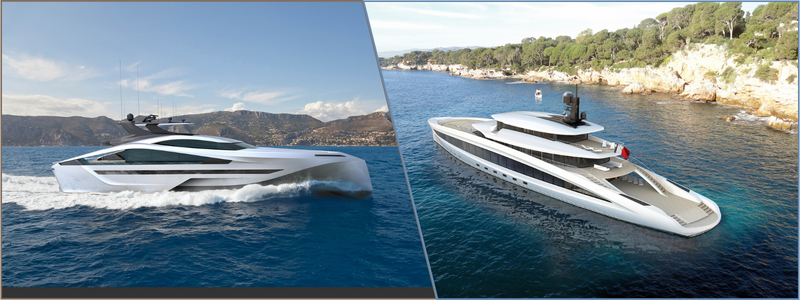
* Hourly rate
For design-only work, an hourly rate pricing structure is preferable. An experienced naval architect knows how much time it will take to create a design based on the rough sketches or concepts provided by the client. The more detailed the design requested the more accurate the estimation will be. Most yacht designers (naval architects or marine engineers) charge an hourly rate for their services. According to the USA Bureau of Labor Statistics (BLS), the average pay rate is as follows:
Note: BLS estimates as of May 2021 (latest available data)
RELATED: Finite element analysis costs, consulting company rates & engineering services pricing
* A combination of fixed commission and hourly rate
A naval architect may offer a flexible pricing structure using a combination of a fixed commission and an hourly rate. The design phase has to be divided into two stages for the method. An hourly rate fee is used during the first or preliminary design work, in which the client can request changes as necessary. The client and architect determine the yacht specifications, including the layout, dimensions, materials, stability, weights, hydrostatics, and performance. Regardless of numerous modifications, the architect is paid by the hour. A combined approach allows the client customizations while fairly compensating the architect.
For example, the architect’s rate is $80 per hour for a 37-foot-long yacht design. The architect can finish the job in 140 hours for a total design cost of $11,200 without client alterations . With alterations, the job increases to 280 hours for a total cost of $22,400 . A fixed commission applies as soon as the preliminary design is completed. Using the information accumulated during the first phase, the client may want to switch to a fixed fee structure. A percentage-based fee is necessary when the client is ready to begin the construction process or uses the same architect to oversee the progress.
RELATED: How much do engineering design services cost for company design R&D?
Third-party consultant fee
A naval architect may need to hire third-party consultants to help with the project. The consulting fees range from $50 to $80 per hour , depending on the job’s complexity.
Basic Yacht Design Plan
A basic yacht design by a naval architect should include the outboard profile, deck layout, general arrangement of equipment, and at least one mode of construction. All the drawings for those plans are made for the client. In some cases, 3d product modeling services are required where the architect provides a 3D model of the hull shape (solid or surface) as a digital file. The outline includes details to quote labor and materials for the yacht’s specifications, i.e., stability and hydrostatics. A complete yacht design set contains construction drawings for all parts of the boat and information on building the structure. Electrical and plumbing schematics are provided as suggested by consultants specializing in the fields.
RELATED: How much does product design cost & what are the prices for freelance design firms?
Comprehensive yacht design plan
A complete package pays for itself during the construction phase. A comprehensive yacht design plan provides all construction details, including the engine specification and shafting installation procedure. Hardware pieces, weight estimate, and structural stability calculation required for the build are specified. Mylar patterns are also for the deck, hull, keel, rudder, and bulkheads. A contractor needs as much detail as possible to ensure the yacht floats, performs as intended, and operates safely. The basic package offers little detail for construction, and the builders will have difficulty developing the configuration. Clarifying details will cost the client money during the project and in the long run.
Set a budget and stick to it
Naval architects and marine engineering design experts can design yachts given client budgets to compensate for the work and cover overhead expenses. With unlimited financial resources, the client can have the most luxurious ship in the world. Prices can be exceedingly high, especially if the client wants personalized yacht designs. Clients determine a budget and consider the cost of the design and the construction itself. Once a budget has been established, consult a naval architect to understand what is technically and financially plausible.
RELATED: How your company can save money with 3D models
You will start with the initial consultation fee and finish with the delivery of the final design documents. However, some clients want to hurry the process and push to start building the yacht when the design is partially completed. As a result, the architect and the builders must play catch-up in the subsequent development.
Cost of materials
The expense during the design phase goes to engineering design services , mainly to determine what should be installed and how the construction should be done. There is no cost for any material, such as paper/printing. A single drawing is roughly $1,500 to $3,000 , and a complete design requires more than just several drawings. If the client also wants a design for full-size patterns of Mylar, there will be an additional fee for the materials. The cost of paper and printing is tiny compared to the design work, but Mylar and plotter ink cartridges are not cheap. The architect will bill the client for the items.
RELATED: Top 9 design engineering tips for reducing manufacturing costs on new product designs & prototypes
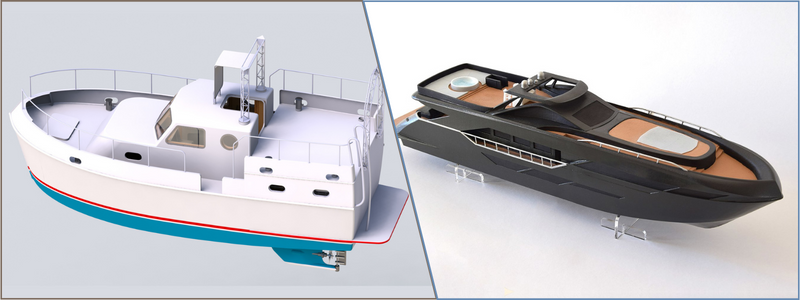
Custom yacht design by size
There aren’t many small custom boats for a reason. A small or large boat may require the same design fee since the construction cost increases with size. The design cost for a small ship is disproportionately high, and a large vessel can absorb the architect’s fee quite easily. During the design process, the time and engineering details cost around the same for 28-feet and 38-feet yachts.
A naval architect exerts the same effort to complete either length, and the extra length does not translate to a higher difficulty level. Sometimes, it is more challenging to design a small custom boat due to space constraints. Assuming a custom (personalized) build is not a factor, a client can use an already-made design from a builder for a small fee. The naval architect who created the design retains intellectual property ownership unless the client purchases it.
RELATED: Top 3 reasons to hire a freelance CAD engineer
The typical yacht design process
The design process of a yacht goes through six stages:
- Design Concept
- Preliminary Design
- Construction Quotes
- Final Design
For a “design-only” work, the process excludes the last two stages: Construction and Delivery.
Design concept
The very first idea of a concept lies in the client’s mind. A client knows a few general specifications about the yacht, whether the overall dimension, power or engine, shape, and materials. Sometimes the client only knows what they want to do once the boat is ready, for example cruising the world or living in the expanses of the seas. Quick research into the boat market, both new and used, should give a glimpse of the average price. The client will finally call a mechanical CAD drafting and design professional or naval architect to consult about the design and inform the professional about the realistic budget range.
RELATED: How do engineers evaluate different design ideas?
Based on the description provided, the naval architect returns to the client to offer sketches and an estimate for the design work. Once the client approves a specific design, the subsequent discussion revolves around the pricing structure. An hourly rate is recommended at this point, considering the possibility of design revisions. The client and the architect sign the contract as the employer and the employee.
Preliminary design
The main objective of the preliminary design phase is to determine if the concept is technically viable. A naval architect does all the calculations to ensure everything works as intended. Minor alterations in the specifications are not uncommon. Equipment specifications and construction methods come next. A 3D modeling design company helps determine the design’s stability and hydrostatics. The preliminary design data should also include power requirements and speed estimates. Another calculation limits the engine size and propeller, given the available space.
RELATED: 5 Tips for successful product design
With equipment and engine installed, the naval architect considers the boat’s weight to pinpoint the center of gravity and how they affect buoyancy. Although the naval architect uses a three-dimensional model, the preliminary design documents are likely comprised of two-dimensional sketches annotated with construction specifications . The supporting documents include power calculation, speed prediction, stability curve, and the expected weight capacity. There is no interior layout except photos of existing boats for design ideas.
At this stage, the client has not discussed it with a builder. An incomplete design document doesn’t include every structural detail necessary to build a yacht. It may not have an electrical schematic, plumbing lines configuration, a definitive list of equipment, or the desired finish level. The best time to talk with a builder is when the final design documents are ready.
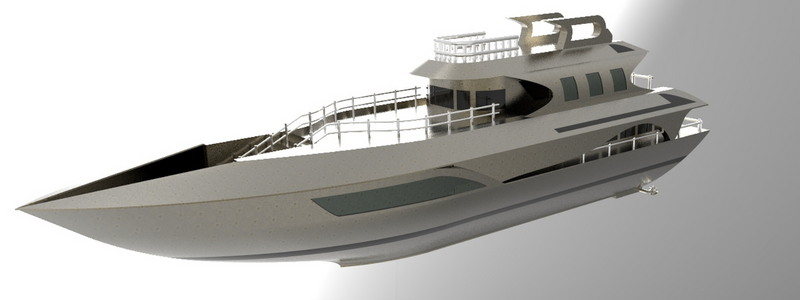
RELATED: Understanding CAD services: from 2D drafting to 3D conversions
Final design
Following approval for the preliminary design, the naval architect begins the bulk of the work. A final design includes all the details builders need to construct the yacht. The outer shell of the boat is drawn as a three-dimensional surface model. It is a technical drawing to help define the mathematical values of the yacht’s exterior and some interior features. Cut edges of the deck and hull are visible in an exploded model view. Based on the same drawing, the naval architect creates two-dimensional construction plans.
Most builders love to work on a design containing as much information as possible. Some appreciate a minimum number of drawings and begin the construction using only major structural plans. They can decide the level of detail on the finished yacht. A client may ask an architect to include 2D electrical drafting services and plumbing configurations, but the professional must hire consultants. If the schematics are not in the final design drawings, the builders will produce them. The architect usually configures the primary electrical wiring and panels for a large yacht project.
RELATED: Cad Crowd’s automobile design freelancers are top notch
If the yacht measures at least 60 feet long and is made of aluminum or steel, the only viable way to complete the final design is with CAD software. The internal structure of the yacht is drawn in 3D to expose the metal pieces required for the construction. Annotation is mandatory because the plates come in varying dimensions, numbered and referenced for the cutting process.
A client may require a 3D architectural rendering expert to provide a 3D rendering showcasing the finished boat as a digital mockup. The naval architect has to hire another professional 3D render artist to do the job. A quality rendering may cost from $3,000 to $10,000 per image .
RELATED: 3D Rendering Costs & 3D Visualization Prices for Firms
Additional design services
A client hires a naval architect or marine engineer to complete the design phase. The naval or marine architect may need assistance from electrical or structural engineers, but the third-party consultants are not directly communicating with the client. The naval architect can help the client seek bids from contractors and subsequently oversee the construction. Another agreement is in order if these services are not specified in the original design contract. Additional services come at an additional cost.
How Cad Crowd can help
Whether you work for a naval architecture firm, own a maritime logistics company, or are an individual looking to create a mega yacht for family travels, our team can work with you to ensure you get the naval design help you need. Visit our website to see the complete list of services we offer. Contact us today for a free quote.
Leave a Reply Cancel reply
By continuing to use this site you accept our Cookie Policy .

- Deals Funded
- Deals in Process
Testimonials
How much does a yacht cost | ultimate breakdown guide.
October 14, 2019
Complete guide to “How much does a yacht cost?” including superyachts and megayachts. Includes the cost of owning and operating a yacht. Yachts and superyachts are symbols of success. They appeal to wealthy individuals but are also extremely useful business assets. In this article, we’ll explore how much does a yacht cost. Also, we’ll answer how much does a superyacht cost and how much does a mega yacht cost. Then we’ll identify additional yacht costs such as fees and taxes. Next, we’ll give example breakdowns of the price of yacht and the price of a superyacht. Finally, we’ll explain how Assets America ® can help fund your transaction, and then answer frequently asked questions regarding the cost of yacht. Note that we’ll devote a separate article to yacht operation and maintenance costs. This article focuses on how much does it cost to buy a yacht.
How Much Does a Yacht Cost?
To know the context for how much does a yacht cost, we define some important terms.
Yacht Terms
- Yacht: A sailing or powered watercraft between 39 and 78 feet in length, accommodating up to 6 guests.
- Superyacht: A luxury yacht ranging in size from 78 to 200 feet in length, accommodating 6 to 12 guests.
- Megayacht: A luxury yacht greater than 200 feet long holding more than a dozen guests.
- Cabin Cruiser : A luxury powered boat between 23 and 38 feet in length.
- Day Sailing Yacht: Small yachts, often with a retractable keel, daggerboard , or centerboard and no cabin.
- Weekender Yacht: Medium-sized yachts, typically up to 31-feet long. Usually, they have lifting keels or twin keels allowing shallow-water operation for two-to-three-day journeys. Normally, weekender yachts have a simple cabin sleeping two to four passengers along with a small galley.
- Cruising Yacht: The most common private yacht, with good handling, onboard comfort, sufficient interior space, and capable performance. Typically, they have a teardrop-planform hull with a deep single-fin keel.
- Luxury Sailing Yacht: Larger yachts powered by wind and engines, with many luxury features. Typically, yacht makers construct these boats with fiberglass hulls and plenty of automation, lighting, navigation aids, hot water, and more.
- Racing Yachts: Yachts optimized for fast sailing, with heavy and deep bulb keels, tall masts, and large sails.
Average Cost of Yacht
New yachts over 100-feet long have an average price of a yacht equal to $1 million per 3.3 feet in length. In other words, a 100-foot yacht will, on average, cost more than $30 million. Older yachts below 85 feet are less expensive. For example, an 84-foot yacht originally built in 2002 and renovated in 2015 sold for $1.45 million.
The average price of a yacht that is preowned, entry-level, and in the 30 to 35 foot range, is about $100,000.
How Assets America ® Can Help
Whether you need to borrow $20 million or $1 billion to acquire your yacht, Assets America ® can most assuredly help. We can arrange short-term or long-term financing for the purchase or refit of yachts, superyachts and megayachts. We can provide financing much more rapidly than most typical funding sources do, and we can arrange financing even if your bank declines. Call us today at 206-622-3000 for a confidential consultation, or simply fill out the below form and expect and prompt response!
Apply For Financing
How much does a superyacht cost.
Superyacht prices are high but variable. For example, the world’s most expensive superyacht (the History Supreme) has a price of $4.5 billion. And at only 100 feet, it is too small to qualify as a megayacht, even though it certainly has a mega-price! On the other hand, a world-famous golfer purchased a 155-foot superyacht for $20 million, a sweet deal. The average price of a superyacht is $275 million.
How Much Does a Megayacht Cost?
The most expensive megayacht, measuring in at 536 feet, cost $1.5 billion. A 1990, 344-foot megayacht can be yours for $210 million. So, the prices of megayachts can vary greatly. In other words, there is no clear answer to how much does a mega yacht cost.
Video: Million Pound Mega Yachts for Sale – Documentary 2019
Additional Costs of a Yacht
A few states don’t have sales tax: Delaware, Montana, New Hampshire, Oregon — and to some extent Alaska. If you buy a yacht in any other state, you’ll owe state sales tax. On a $1 billion yacht purchase, a state like Texas with 6.25% sales tax will collect $62.5 million. You can buy a yacht in a state without sales tax and use it in another state. However, you will eventually have to pay a use tax. Florida caps yacht sales tax at $18,000, but California has no cap.
Municipalities that charge local sales tax could add a percentage point or two to your tax bill.
Most states also assess property taxes on yachts. Marinas may assess a tax on boat slips. Some states will refund fuel taxes on yachts since they don’t use roads.
Yachts with bathroom, eating, and sleeping facilities qualify as second homes. You can deduct the interest on the yacht’s mortgage, but national tax law caps the deduction at $750,000.
A yacht purchased for business purposes is a capital asset that you can depreciate. This would apply to a charter, rental, or fishing yacht that you use to generate income. If you buy a used business yacht for $1 million or less, it might qualify as Section 179 property. If so, you can deduct the full price in the year of purchase.
There are some minor fees you may have to pay when you acquire a boat. For example, you may have to register your yacht with the International Registry, which has fees of $550 to $1,500. Also, you may pay an annual tonnage tax, a ship radio station license fee, and certificate of insurance. Other fees include those for :
- An annual Maritime Security and Compliance fee
- Private Yacht Limited Charter Compliance Certificate
- Minimum Safe Manning Certificate
- Continuous Synopsis Record (CSR) Document
- Annual Yacht Service
- Intended Registration and Vessel Under Construction Registration
Cost Breakdown
When you want to know how much does a yacht cost, you need to know the cost factors. A yacht’s price directly ties to its construction costs, which include:
- Design: The design requires expertise in marine and mechanical engineering. For example, the designers must undertake many stability and hydrodynamic studies. Also, the design must be esthetically pleasing.
- Construction: It can take many months to construct a large yacht. You must factor in materials, equipment, and labor. Luxury-yacht buyers may want expensive and/or rare materials. One yacht, the infamous History Supreme, contains dinosaur fossils and meteorite stone! But less outlandish materials, such as fine woods and precious metals, still contribute to high construction costs.
- Engine: The number and power of yacht engines can greatly impact cost. Naturally, all things being equal, a sailing yacht should cost less than a comparable motor yacht. It requires huge power to propel a large megayacht, and an elaborate engine room to operate those engines.
- Interiors: Large yachts have many rooms, including galleys, heads, bedrooms, meeting rooms and more. In addition, electronics are important cost items.
FAQs — How Much Does a Yacht Cost?
How much does a 50-foot yacht cost.
A 50-foot yacht is a good candidate for weekend duty. A 2014 convertible sportfish costs just under $2 million. An example price of yacht (51-foot 2013 Azium Magellano 50) is $670,760. A 52-foot 2017 Carver C52 Command Bridge sells for $1,149,000.
What is the cost to build a yacht?
Mid-level yachts cost about $25 to $35 per pound to build. Higher-level-yachts have average construction costs pf $45 to $65 per pound. The top vessels built with exotic materials and hi-tech systems can cost $80/pound to build.
How much does a 60-foot yacht cost?
A 60-foot yacht is about the largest size that an owner operates. A new Hatteras M60 can easily cost around $3 million. However, you can get a 2007 60-foot Sunreef 62 for $735,000.
How much does a 100-foot yacht cost?
Superyachts in this range contain many amenities. You can buy a new 100-foot AB 100 for just over $8.8 million. But let’s face it, you can spend hundreds of millions on big yachts. Your only limits are your imagination and most importantly, of course, your wallet!
Related Articles
- Complete Guide to Yacht Financing
- Sale Leasebacks – Everything You Need to Know
- Yacht Builders – Ultimate Guide (Coming Soon)
- Yacht Interior Designers – Ultimate Guide (Coming Soon)
Recent Posts
- Commercial Equipment Leasing – Guide + Financing from $10 Million September 26, 2020
- Industrial Equipment Financing – Guide + Leasing from $10 Million September 18, 2020
- Heavy Construction Equipment Financing – Leasing from $10 Million September 14, 2020
- Opportunity Zones – Ultimate Investor’s Guide (2020) September 2, 2020
- Aircraft Appraisal The Ultimate Guide (Cost, Companies, Advice) August 10, 2020
- 5 Best Apartment REITs + Comprehensive Reviews (2020) August 8, 2020
- Multifamily Investing – 50 Expert Tips, Tricks and Hacks July 28, 2020
- How To Find Multifamily Properties – Ultimate Guide 2020 July 6, 2020
- Multifamily Industry – 2020 Market Report (Trends, Outlook, News) June 28, 2020
- FHA Multifamily – Step-By-Step Financing Guide June 20, 2020
Ronny was a pleasure to work with and is extremely knowledgeable. His hard work was never ending until the job was done. They handled a complex lease and guided us through entire process, including the paperwork. Not to mention a below market lease rate and more than all the features we needed in a site. We later used Assets America for a unique equipment financing deal where once again Ronny and team exceeded our expectations and our timeline. Thank you to Assets America for your highly professional service!
Great experience with Assets America. Fast turn around. Had a lender in place in 30 minutes looking to do the deal. Totally amazing. Highly recommend them to anyone looking for financing. Ronny is fantastic. Give them a call if the deal makes sense they can get it funded. Referring all our clients.
Assets America guided us every step of the way in finding and leasing our large industrial building with attached offices. They handled all of the complex lease negotiations and contractual paperwork. Ultimately, we received exactly the space we needed along with a lower than market per square foot pricing, lease length and end of term options we requested. In addition to the real estate lease, Assets America utilized their decades-long financial expertise to negotiate fantastic rates and terms on our large and very unique multimillion dollar equipment purchase/lease. We were thankful for how promptly and consistently they kept us informed and up to date on each step of our journey. They were always available to answer each and every one of our questions. Overall, they provided my team with a fantastic and highly professional service!
Assets America was responsible for arranging financing for two of my multi million dollar commercial projects. At the time of financing, it was extremely difficult to obtain bank financing for commercial real estate. Not only was Assets America successful, they were able to obtain an interest rate lower than going rates. The company is very capable, I would recommend Assets America to any company requiring commercial financing.
Assets America was incredibly helpful and professional in assisting us in purchasing our property. It was great to have such knowledgeable and super-experienced, licensed pros in our corner, pros upon which we could fully rely. They helped and successfully guided us to beat out 9 other competing offers! They were excellent at communicating with us at all times and they were extremely responsive. Having them on our team meant that we could always receive truthful, timely and accurate answers to our questions. We would most definitely utilize their services again and again for all of our real estate needs.
Assets America is a great company to work with. No hassles. Recommend them to everyone. Professional, fast response time and definitely gets the job done.
Ronny at Assets America has been invaluable to us and definitely is tops in his field. Great experience. Would refer them to all our business associates.
We were very pleased with Assets America’s expertise and prompt response to our inquiry. They were very straight forward with us and helped a great deal. We referred them to all our business associates.
I’ve worked with this company for decades. They are reputable, knowledgeable, and ethical with proven results. I highly recommend them to anyone needing commercial financing.
Ronny was incredibly adept and responsive – top-notch professional who arranged impressive term sheets.
Assets America helped us survive a very difficult time and we most definitely give them 5 stars!
Ronny was very friendly and though we were unable to make something happen at the moment he gave me some direction to go.
My business partner and I were looking to purchase a retail shopping center in southern California. We sought out the services of Ronny, CFO of Assets America. Ronny found us several commercial properties which met our desired needs. We chose the property we liked best, and Ronny went to work. He negotiated very aggressively on our behalf. We came to terms with the Seller, entered into a purchase agreement and opened escrow. Additionally, we needed 80 percent financing on our multimillion-dollar purchase. Assets America also handled the commercial loan for us. They were our One-Stop-Shop. They obtained fantastic, low, fixed rate insurance money for us. So, Assets America handled both the sale and the loan for us and successfully closed our escrow within the time frame stated in the purchase agreement. Ronny did and performed exactly as he said he would. Ronny and his company are true professionals. In this day and age, it’s especially rare and wonderful to work with a person who actually does what he says he will do. We recommend them to anyone needing any type of commercial real estate transaction and we further highly recommend them for any type of commercial financing. They were diligent and forthright on both accounts and brought our deal to a successful closing.
Questionnaire
The Cost of Yacht Building
Last Updated on 12 November 2017 by Eric Bretscher
Yacht building costs break-down in material costs, labour and some ancillary costs that don’t contribute to the final product, but can’t be eliminated either, like leasing space or equipment.
There are different ways of undertaking the construction of a yacht, but the basic cost components remain the same, the difference is the extent to which they apply
The proportions shown above vary widely. Labour costs are very location-dependent and can easily exceed material costs; those however tend to remain comparable everywhere. In New Zealand, for example, for a long time labour remained surprisingly affordable for a fully-developed country, quality is high and equipment availability is very good, hence the number of superyachts built for overseas interests. It is not as attractive any more now and there is too little competition for building mid-range yachts. In order to be competitive, a yard generally needs to have its own marine engineers, electricians, riggers etc, or all these services are going to come at a very high added cost.
Ancillary costs are all additional expenses in the build that do not directly result in physical, tangible outcomes.
Direct Material Costs
Material costs include all supplies, raw materials, consumables and equipment required to complete the vessel at the cost of sourcing them.
Some broad, but useful relations exist between the different fractions of the material costs; a typical one is the cost of the shell materials versus the total in materials and equipment.
The breakdown below was extracted from my records from building the 13-metre aluminium sloop Nordkyn . It should be relevant for similar projects that include high standards of quality and finishing, great simplicity and a rigorous sourcing strategy.
The percentages listed are fractions of the total material cost as sourced , not total vessel cost, unless no other costs (such as labour) are incurred:
A few comments:
- The rigging fraction is very high, but suppliers of rigs of the size required were few and global and, when building a one-off, leverage is lacking and internal engineering costs are being incurred. Buying the extrusions and building most everything else could have been cheaper, but inferior in quality and longevity. Some (of the best) mast makers simply won’t sell their extrusions alone or sell partial solutions to protect their reputation. The relative cost was also clearly influenced by the size of the rig in relation with the displacement of the vessel.
- Powering . A builder benefitting from trade volume would have had access to better engine pricing than I had, but the difference would likely not exceed two points.
- In spite of the foam core composite construction, the interior build only contributed to 10%.
- The coatings budget was very significant, the result of the finish quality sought, the aluminium substrate and a painted interior. Half of what was spent would likely represent the lower limit.
- You can literally spend as much as you want on instrumentation and electronics. The amount included here already covers items useful, but not necessary.
- The plumbing budget is clearly higher than usual as a result of the multiple watertight compartments and bilges, but also the use of stainless steel fuel lines etc.
- Plan printing and other small items fell into the residual 1% not accounted for.
If you are considering building a sailing yacht, the table above contains useful information.
At a glance, one can see that the cost of building the interior was 62% of the cost of the shell for example. Also, while building the hull is often perceived as a major cost and undertaking, it is anything but supported by the data. This is the prime reason for so many projects lying abandoned everywhere: if you suggest that the total materials bill will amount to over six times the value of those in the shell itself, people refuse to believe it. The figure here relates to a high-end job, but even in the case of a rough build, materials for the completed vessel are still likely to cost at least 4 to 5 times the value of those in the shell. Sailing yachts are expensive from the deck up, in miscellaneous hardware, sails and rigging: 43% of the total material cost here.
Another item of interest is the project cost curve. Here, we will inspect the materials cost curve alone, because labour costs are too location-dependent and would blur the picture.
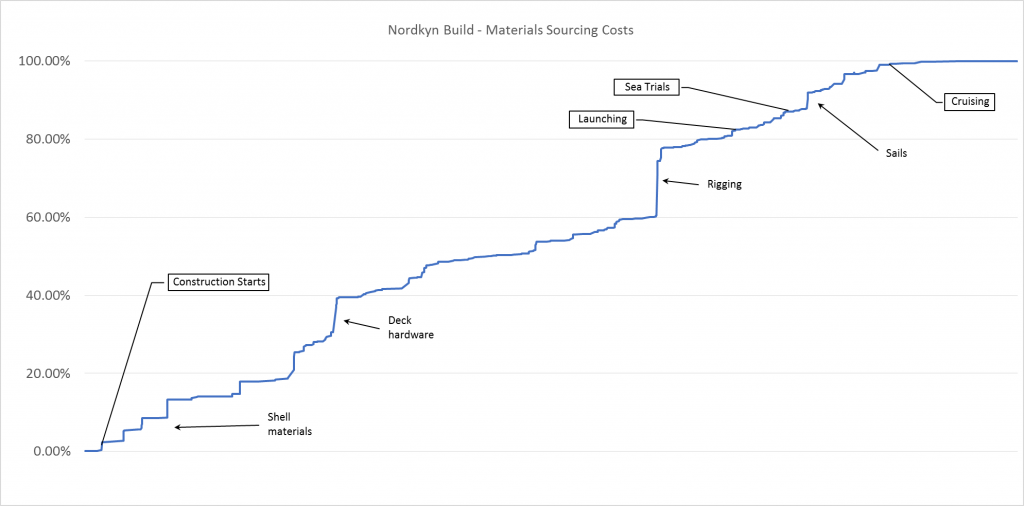
Regardless of project duration, this curve should still look the same, so I removed date references along the bottom axis. Note the small stairway as the alloy shell was being fabricated at the beginning, materials were purchased in lots as needed. Some fairing and painting of the hull takes place with very little needed, until the hull is turned over. Then we see engine installation (a mistake, too early, it should have waited nearly as long as the rigging) and a steep rise as most of the deck hardware is being sourced to allow finishing the deck plane. A long light slope follows as the deck is completed and painted and all the interior is being built. Sourcing of the rig results in a big hit, but delivery issues delayed launching. Sails waited until the mast was standing and then a lot of the costs came trough after they had been received. More sails followed as well as cabin and sailing gear.
This is a fairly healthy materials cost curve, because it tracked very tightly with construction progress.
Margin on Materials
Owner builders successfully cut this out only if they can access similar pricing structures available to commercial yards. This is not always the case. In the case of a personal project, it can be better to seek an agreement to source equipment through an established yard for example, rather than incur retail pricing.
The strategy is always the same:
- Try to consolidate supply
- Investigate options
- Negotiate pricing
If the build is going to be contracted to a yard, a margin will apply on materials. This is reasonable as there is a cost in organising the required equipment and most yards do not charge distinct project management costs.
Yards also expect to be left with a net profit from supplying materials. Marine construction is often a competitive market and yard owners are seeking additional revenue besides direct labour to “make a go” of it. They can get quite irritated when the client attempts to cut them out by supplying directly and sometimes inflate their labour to offset this.
A fair, up-front discussion and a transparent agreement on margins is often by far the best strategy for a contracted build.
Labour Costs
Labour is a very significant component in one-off marine construction and can easily compare or exceed material costs, so labour efficiency is critical. If you build your own boat, the whole idea is eliminating this cost altogether – and it works – but the challenge is then preserving efficiency. You may end up the only person on the job and it can be inefficient.
Labour efficiency is the relation between effort and result. It requires that workers know what to do, how to do it and are just enough to do it .
If you build your own yacht, you can usually afford some learning curve, provided the core skills exist, but you still need to know what to do and you may need an extra hand to help at times.
You will seldom get more than what you expect, but you will usually get what you are prepared to tolerate
In the case of a contracted build, there are five situations where labour costs get out of control very quickly:
- Indecision . The workforce is available and allocated to the project, but important, complex decisions constantly need to be made. As a result, everyone is standing around talking about the pros and cons instead of building the vessel. Such discussions often take place at a rate of hundreds of dollars per hour and in the meanwhile there is no progress. Typically, the design data is insufficient or it is an alteration/refit job and there is no plan for it. A clear, detailed plan that removes decision processes from the construction floor is invaluable. It may look expensive up-front, but it will save you the extra cost many times over and the vessel will be available earlier. Designers who sell a set of lines for a few hundred bucks don’t really want to be plagued with constant queries for months or years afterwards. Those who sell a fully detailed plan at a premium don’t face so many questions in the first place and don’t mind answering the ones they get.
- Lack of project management . If the design information is good, but the job is still not tracking, it can come down to a lack of direction and leadership. If the yard doesn’t have the leadership capability, but the resources and construction skills are there and the rates are attractive, you may want to consider hiring a project manager. Typically, he/she will preside over sourcing, logistics, allocation of work and resources as well as quality management and keep the build on track. You need someone capable and knowledgeable in the field.
- Incompetence and/or lack of experience . Work with people who have done it before, or fully take into account the fact they haven’t in the cost structure. Ideally, one would want to say “don’t do it”, but it still happens all the time. People often try to work with people they already know and sometimes make wrong calls on this basis. Be prepared to wait for delivery and be prepared to have to seek and inject external expertise if it happens. If this is not enough, take the project elsewhere at the first opportunity.
- Under-resourced . Is the outfit big enough to tackle the project? Is the workforce sufficient? What fraction of their workforce can they dedicate to the project? Can they tap into additional resources if needed? One person trying to do a two-man job single-handedly won’t take twice the time. It will take a lot longer than that, because typically the job requires more than two hands, or requires to be in more than one place at the same time to be done efficiently. Look at the make-up of the workload in the business. Routine, steadily reoccurring work for established clients will always take precedence over a project if there is competition for resources, because on the long run it makes more money and represents a secure income for the company. If this can’t be resolved, take the project elsewhere at the first opportunity.
- Over-resourced . There are only so many tasks that can effectively be progressed in parallel and one can only make use of so many hands to complete a task. Efficiency drops very quickly if unnecessary resources are allocated to the job. This happens readily when larger firms need to keep their workforce occupied. Employing an independent project manager on a build can be the best way of controlling costs; the project manager is an independent third party working with everyone on behalf of the owner, and with the interests of the owner at the forefront. If you are facing such issues and you have a good grasp of the work being done, walk on the job first thing in the morning, ask what the exact programme for the day is and look at who has been assigned to do it. If needed, make your expectations clear with the management and get the staff allocation reviewed. Excess resources will usually get transferred onto someone else’s job. Come across as firm, but diplomatic, the blade can cut both ways. If you don’t get a review on that day, but it never happens again after, it is as good as a win.
This leaves the question of how much labour and how long it is going to take. Find those who know, ask them, compare the answers you get and work on understanding the differences. Alternatively, seek data from a similar project if you can.
Marine construction is another field where you don’t get something for nothing. If you are tempted by a lower price or estimate, ask yourself whether you are prepared to accept lower quality and/or specifications. Understand what you are leaving out.
Ancillary Costs
Design costs are incurred up-front before actual construction starts, but survey, compliance, certification, inspections, rental of premises, transportation, cranage, temporary berthing, fuel for trials (in the case of motor yachts) and more can all add significantly to the final bill outside of the original budget.
Was the agreed lump sum supposed to cover such and such cost?
In the case of a build contract, ensure that clarity exists regarding the scope of services and who pays for what, especially if a lump sum agreement is in place for the delivery of the vessel or part of it, otherwise the argument is almost guaranteed to spring up as none of the parties will be keen to pay for those.
The Value of Time
Time tends to cost on construction projects; faster is usually better up to the point where penalties are incurred for the rate of progress. Paying overtime rates is such an example that requires further justification.
If the project is going to take time, typically due to limited available resources, you need to specifically set up the project to control and eliminate as much as possible time-dependent costs
Why is faster better? Time-dependent costs, such as leased space for construction, accumulate until the vessel is out whether it is being worked on or not. Time-value of money is the other aspect often overlooked. Money tied-up in a half-built vessel lying around earns interests for those who received it, not for the owner who paid it. For the same completion date, it would have been wiser to defer the start and keep the capital longer. On large projects, this becomes very significant, but even on a personal build, the difference can easily amount to thousands of dollars.
Cash flow – Learn from Industry Best Practices: Just-In-Time
Don’t source equipment before you actually need it for a reason on the job , unless there is a very clear and undeniable benefit in doing so, like a clearance price that won’t be available again or quantity-based rebates. Even then, try to agree on the discount rate based on a commitment to purchase the balance later.
Never, ever , buy electronics, instrumentation or computer-type equipment until the project is near-complete. Performance and features keep improving, price usually drops over time and warranty periods are short.
New engines are pre-lubricated from their last run at the factory and have a shelf life of some 3 years or so. Check before you buy . Once shelf life expires, obtaining a warranty on them can be near-impossible due to the risk of severe damage at start-up. Some dealers may use the necessary precautions and still stand behind the product, but many will simply walk away in case it has been cranked already and the bearing shells are damaged.
I have seen many private boatbuilding projects where huge amounts of equipment had been purchased, but little work had ever been done. In the end, the brand new gear is obsolete before it has even seen the light of day – if it ever does. It is senseless. This is just buying a false sense of progress and achievement.
Whether you build yourself or contract the project out, keep your capital for as long as you can and progress the job as fast as you realistically can. And don’t stop until finished.
Marine construction yards love milestone payments, the more up-front the better. Contractually establishing a progressive payment schedule that tracks the effective cost of the build is the first step towards controlling cash flow and reducing financial risks. The last thing you want is your milestone payment to be absorbed to progress another job.
2 Responses to “The Cost of Yacht Building”
Hi Eric, Was the ‘premature’ installation of Nordkyn’s engine a deliberate decision to ignore the ‘Just-In-Time’ principle in favour of other considerations? If so, what were they?
Thanks – Peter
There were no other considerations than a degree of convenience, but the drawback of ending up with no warranty was never perceived or anticipated either at the time. In the end, it never made any difference: the engine has a little more than 100 hours on the clock now, but it also took over 5 years to get there. In this context, you can see that the “1 year from start up or first 100 hours, whichever comes first” warranty statement is in fact of very little value… in my case, such a warranty is bound to expire before I get any chance to test it.
The net effect here was that it turned out to my advantage:
1/ I saved paying the agent for coming down, inspecting the setup and starting up the engine for the first time, as he didn’t want to know about it any more and this represented a lot more than the value of deferring the purchase by say 3 years. 2/ I was able to start up my engine myself, and I did so with a lot more care than what agents often take. When you have to do those things all the time, it is easy to get a little too casual with them.
Having the engine available early was convenient in terms of lining it up and adjusting the shimming and the exact space available in front of it. Today, things are somewhat nicer because you can get 3D CAD engine models from the manufacturers and literally install the engine into the drawing with every detail included. This is what I always do these days, but, at the time, I had to work with a profile only.
Hindsight is also a wonderful thing and today I would most certainly buy it almost at the last minute only, after having completed everything outside and all of the interior construction as well.
Leave a Reply Cancel reply
Your Comment
Name (required)
E-mail (required)

Building a yacht: superyacht construction process
Building Your Own Yacht Process, Superyacht Construction, Marina Architecture, Buildings
Building A Yacht Of Your Own
29 June 2020
Building A Yacht Of Your Own – What Is The Process?
29th June 2020 – Imagine building your very own superyacht, designed to your specific needs, tastes and desires. While building a yacht is more complex and may take years of research and planning than buying new yachts or motor boats for sale , it will also be as exciting and fulfilling as all the future journeys you will enjoy onboard it. But where to start? How do you go about tackling your very own superyacht construction to realise your own new build yacht ?
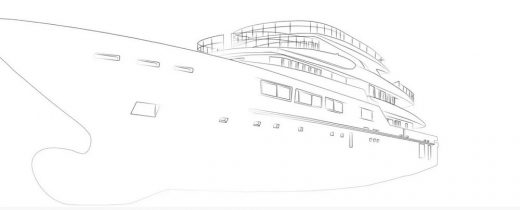
A Look Into Building A Yacht – How To Go About It?
Every custom-built superyacht starts with a vision, based on personal preference and taste, and the type of onboard lifestyle desired. What kind of cruising is required, which luxuries would you like onboard, for example a spa or swimming pool, and is a helipad necessary? With a world of options to consider, the future owner will naturally be the driving force behind their own superyacht construction, but to ensure the smoothest journey possible, they will need a team of experts to work on such a big project.
The Superyacht Construction Team – Key Players
The process of building a yacht will involve a great number of decisions, so having the support of a knowledgeable and experienced team is imperative.
The owner may wish to engage a respected yacht broker to build the team, knowing that they spend a significant amount of time liaising with key players across the yachting industry. They will also ensure the owner’s interests are protected, while providing access to some of the world’s most exciting and ground-breaking yacht builders.
Key players will include a professional yacht designer and naval architect, who will be chosen depending on the type and style of superyacht construction required. An engineer will be engaged for detailed design, and an interior designer will need to work in conjunction with both, designing the layout and cabin suites to meet the owner’s requirements.
You will also need to engage an owner’s representative to oversee the superyacht construction on your behalf. In some cases, the vessel’s future captain may take this role, and offer guidance and reassurance throughout the design and construction stages. They will also negotiate the most favourable terms and protect the buyer’s interests.
Dedicated Project Management Team for Building A Yacht
In addition, when building a yacht, a project management team will be engaged to oversee the day-to-day details, from coordinating the production of the technical specs to running a tender process with shipyards, through to price and contract negotiations.
As the superyacht construction progresses, they will act as the go-between for the different parties involved, and ensure that every element of the project is handled efficiently and to the highest standard. Some will work full time, while others with short-term specialisms may be engaged during particular phases of the build.
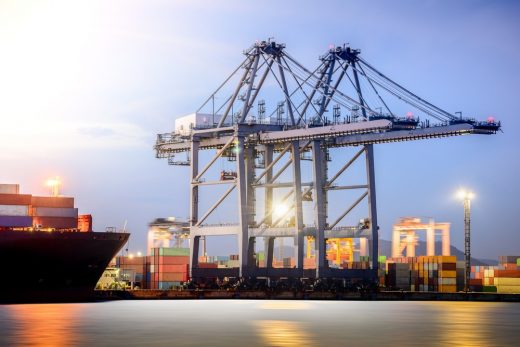
The Shipyard – The Heart of Superyacht Construction
The shipyard is where the superyacht construction finally gets underway, using its state-of-the-art equipment, experienced representatives and skilled craftsmen. Involved from the design stage, the shipyard will work closely with the project manager and/or owner’s representative, as well as both the interior and exterior designers to ensure that the end result not only fits the owner’s specifications, but also meets marine legislation and technical requirements.
With the complexities of changing international legislation, it is the project manager’s job to liaise with all parties to ensure that everyone is kept up-to-date on any necessary design changes or alterations.
The Legalities
An experienced team of maritime lawyers will be engaged to write contracts that set the guidelines for the build and protect the buyer from technical issues and delays. Detailed build milestones and payment schedules will also be drawn up. On the vessel’s completion, lawyers will advise on flag registration and handle all other regulatory aspects, as well as the operational setup and ownership structure.
Sea Trial – Exciting & Essential
After successfully building a yacht to the owner’s requirements, surveyors will be needed to establish the vessel’s performance and seaworthiness during a sea trial, an essential part of the construction of any new superyacht. During a sea trial, all parties work together to fine-tune the systems and iron out any issues.
Typically a sea trial takes place on open water and can last several days. The yacht’s crew will usually be engaged six months to a year before completion, and will play an integral part in putting the superyacht through its paces. These will include testing the vessel’s speed, manoeuvrability, equipment and safety features.
Also present onboard will be technical representatives from the shipyard as well as those from any major systems used, the owner’s representative, and governing and certification officials.
The certification officials are employed by a classification society, a third-party service that assures the quality of construction – the nautical equivalent of an MOT. The classification certificate they issue will be required for registering the yacht and obtaining marine insurance. It may also be required before entering certain ports or waterways, and will be of interest to future charterers and potential buyers.
Owner’s Supply
Most custom yacht contracts do not include what is known as the Owner’s Supply – any additional items the owner desires after building a yacht, such as tenders and water toys, audio-visual and entertainment systems, loose furniture, tableware, and decorative objects. Each will need to be procured, insured, managed and integrated into the yacht itself before final delivery.
Building A Yacht – The Final Delivery
At last the big day arrives: the superyacht is delivered to her delighted owner, and launched with much fanfare and celebration. The proud new owner is now free to enjoy their very own, truly unique superyacht out on the open water.
The process of building a yacht might be a complex, long-term commitment and a major investment, but a custom-built vessel is limited only by the owner’s imagination. For all the effort and work involved, there can be nothing more thrilling than realising a new build yacht that fulfils all your dreams and requirements, enjoying it with family and friends for many years to come.
Boat Design Articles
Guide to best European shipyards
New Yachts 2018
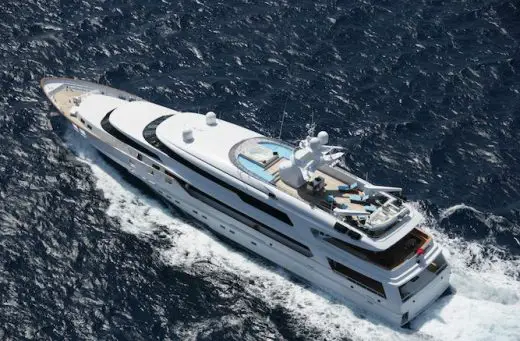
Yachtsman’s House on the Isle of Wight
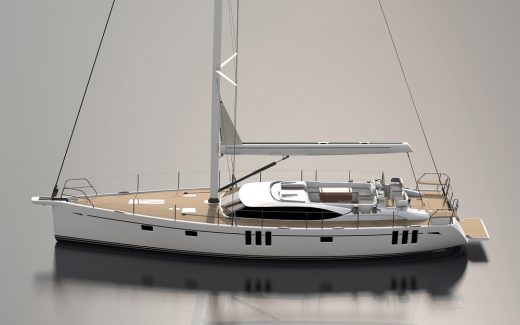
Marina Architecture
Building a Superyacht
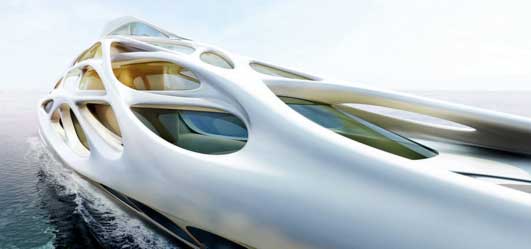
Boathouse Articles
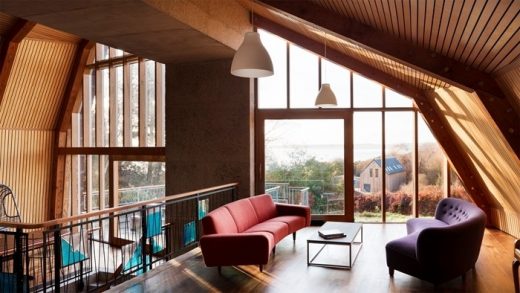
Comments / photos for the Building A Yacht Of Your Own – What Is The Process? page welcome
Cost to build a yacht
- Post author By Praise Smile
- Post date September 29, 2022
- No Comments on Cost to build a yacht

The cost of building a yacht can vary greatly, depending on the size and amenities of the vessel. For example, a small sailboat with limited features can cost less than $50,000 to build while a luxury yacht could cost well over $5 million.
Yacht Building Costs
The following are some factors that affect the cost of building a yacht:
Size – Yachts range from 15 feet to more than 100 feet in length. Larger yachts require more materials and labor to build, which increases their overall price tag.
Quality – If you want your yacht to be made out of high-quality materials like teak or mahogany, then expect to pay more for it than for one made out of fiberglass or plastic.
We have a wealth of experience when it comes to buying, selling and chartering yachts. We have been in the industry since 2002, operating from our offices in London and our base in St Tropez, France. Our team of experts are available to help with all your yachting needs.
Our range of services includes: buying/selling/chartering new and used vessels; yacht management; boat maintenance; crew placement service; insurance; legal advice; financial advice etc
If you are looking for a new or used motor yacht, sailing boat or any other type of watercraft please contact us today to find out how we can help you!
Yacht cost calculator
The cost to build a yacht depends on the size of the yacht, the materials used and your choice of design. The price can range from $100,000 to $1 million or more. A typical yacht ranges from 50 feet to 100 feet in length and has a draft of 5 feet or less. Yacht prices include not only the cost of building but also the costs associated with launching and outfitting the vessel.
Yacht design
When it comes to yacht design, there are many different options available. Some are designed specifically for racing while others are designed for cruising through open waters or even exploring shallow water areas such as rivers and lakes. You can choose between an older style or modern-day design as well as what type of propulsion system you want installed on your vessel.
Costs associated with building a yacht vary depending on its size, but generally speaking, larger boats will cost more than smaller ones due to increased labor costs associated with building larger vessels. However, if you’re looking for something unique and eye catching then going large might be worth it because you’ll stand out from the crowd when cruising down your favorite waterway!
Getting a yacht is not easy and it is quite expensive. A good yacht can cost you millions of dollars and you will have to pay for it monthly. The cost of owning a yacht depends on many factors such as the size of your boat, its features, and where it is located.
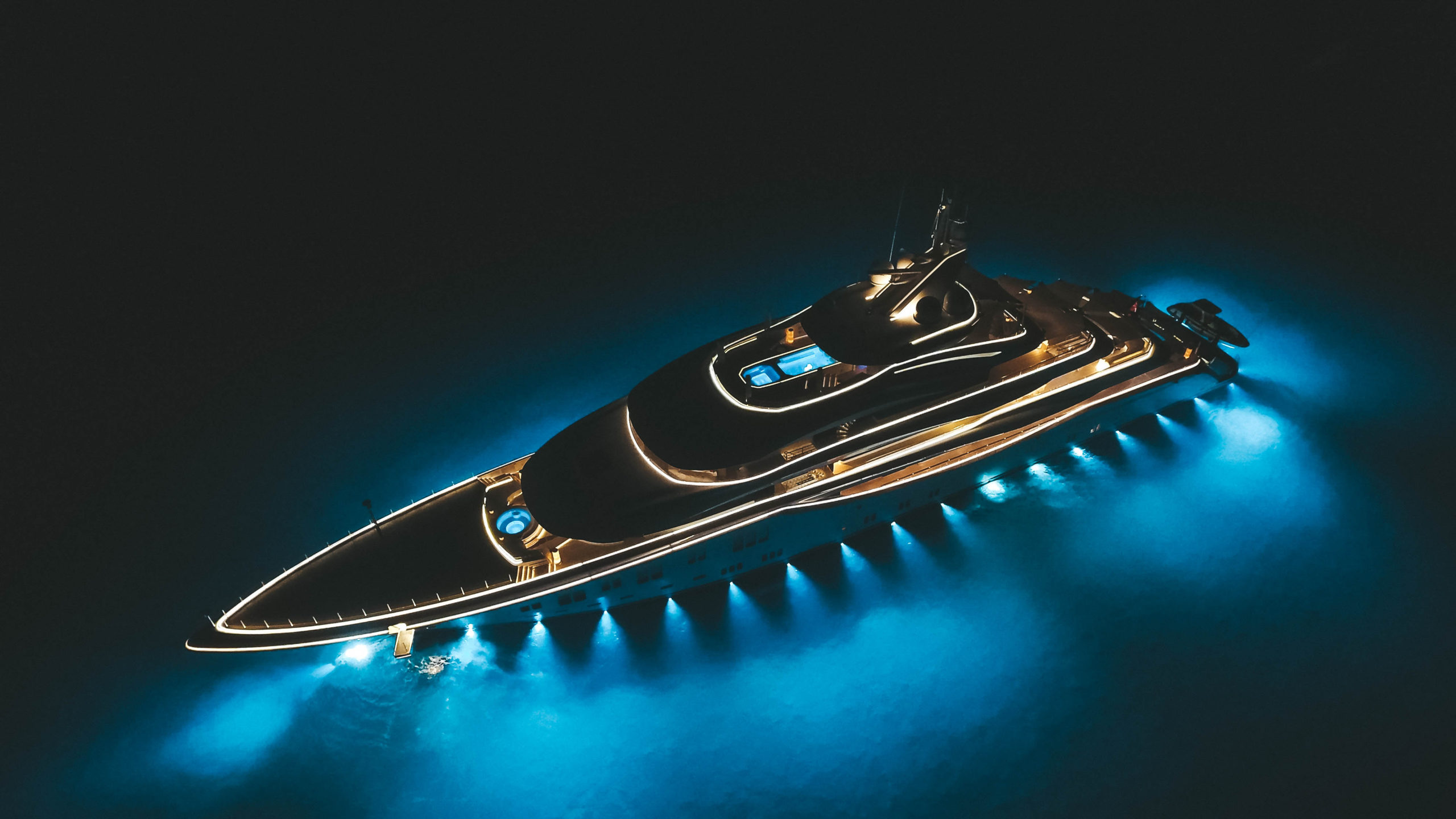
Yacht Cost Calculator
The first thing that you need to do is to estimate the cost of building a yacht by using our Yacht Cost Calculator. This calculator takes into account many factors such as:
Size – The size of your boat will affect its design and structure as well as its overall cost. The bigger your yacht is, the more expensive it will be because more materials will be needed for construction purposes. For example, if you want to build a 40-meter long motorboat with three levels then you should expect to pay around $3 million for construction purposes alone without taking into account other costs such as maintenance expenses or fuel costs etc..
Location – Where you want to keep your boat also affects its price significantly because certain areas are more expensive than others due to
How much does it cost to build a yacht?
The answer is that it depends. There are so many factors in play, from the size of the yacht to the location where it will be built.
However, we can use our experience in the industry to give you a general idea of how much a new yacht will cost.
Estimating the cost of building a yacht
First, let’s talk about what goes into building a yacht. The most important factor is the level of customization you want for your vessel, which could range from simple cosmetic changes like changing the color scheme to adding extra cabins or even moving deck furniture around.
Next, there are three main types of construction methods: steel hulls, composite hulls and aluminum hulls. Each one has its own pros and cons, but they all require skilled labor and materials that don’t come cheap.
Steel hulls are durable but heavy — which means they’re not great for maneuverability — while composite and aluminum are lighter but more expensive than steel (and therefore more expensive to maintain). Aluminum also requires less maintenance over time than either steel or composite vessels because its structure doesn’t corrode as easily as its counterparts’.
In addition
The cost of building a yacht depends on the size, type and the level of customization. The average cost for building a 80 foot yacht is between $3 million and $5 million. The larger yachts can go up to $8 million or more depending upon the features and amenities that are required by the customer.
The cost of building a yacht also varies depending on whether you want to buy an existing one or commission your own custom design. For example, if you want to buy an existing yacht, then you will have to pay more than if you decide to build your own custom one.
If you are looking for buying an existing yacht, then it would be better if you do some research online first so that you can get an idea about how much they cost. If there are no suitable options available online, then it is better that you ask around from your friends who might know someone who owns such a vessel or even ask them directly about their prices.
Leave a Reply Cancel reply
Your email address will not be published. Required fields are marked *
Save my name, email, and website in this browser for the next time I comment.

Boat Building Cost Calculator
Boat building costs vary widely depending on boat type, size, materials, and features. Small dinghies can range from $500 to $5,000, while larger yachts can cost from $100,000 to over $20 million. Labor costs, material choices, and customization play significant roles in determining the final cost. Accurate estimates require detailed specifications and professional consultation.
Estimating boat building costs can be quite complex and depends on various factors, including the type and size of the boat, materials used, labor costs, and additional features. Here’s a simplified table with rough cost estimates for different types of boats:
These cost estimates are very rough and can vary significantly based on your location, the boat’s design, and the specific features and materials you choose. Additionally, labor costs can be a substantial factor, especially if you hire professionals for construction. Always consult with boatbuilders or experts for accurate, detailed estimates.
How much does it cost to build a wooden boat? The cost to build a wooden boat can vary significantly depending on the size, design, and materials used. It can range from a few thousand dollars for a small boat to hundreds of thousands for a larger, more complex vessel.
What is the process of making boat building? The boat building process involves various stages such as design, lofting (drawing the boat’s full-size lines), constructing the hull and deck, installing systems and equipment, finishing, and launching.
How much does it cost to build a sailing yacht? The cost to build a sailing yacht can vary widely based on its size, materials, and level of customization. It can range from hundreds of thousands to several million dollars.
What is the best wood to build a boat? Commonly used woods for boat building include mahogany, oak, cedar, and teak. Each wood has its strengths and characteristics, and the choice depends on factors like the boat’s purpose and budget.
What is the lifespan of a wooden boat? The lifespan of a wooden boat depends on the quality of construction, maintenance, and usage. Well-maintained wooden boats can last for decades or even centuries.
What is the best material to build a boat? The best material to build a boat depends on factors such as the boat’s purpose, design, and budget. Common materials include fiberglass, aluminum, steel, and wood.
What is the easiest boat building method? For beginners, stitch-and-glue or plywood construction is often considered the easiest boat building method due to its simplicity and minimal use of specialized tools.
What is marine plywood called? Marine plywood is sometimes referred to as “marine-grade plywood” or “marine-grade exterior plywood.” It is a high-quality plywood specifically designed for marine and boat-building applications.
Is it cheaper to buy or build a yacht? Building a yacht can sometimes be cheaper than buying a ready-made one, especially if you have the skills and time to do it yourself. However, it depends on the yacht’s size and complexity.
Does owning a yacht make money? Owning a yacht is generally considered a significant expense. While some yacht owners may charter their boats to offset costs, it is not typically a profitable venture.
How much does it cost to run a yacht per year? The annual operating costs of a yacht can vary greatly depending on its size, maintenance needs, crew salaries, insurance, mooring fees, and other factors. It can range from tens of thousands to millions of dollars per year.
Is wood or fiberglass better for a boat? Wood and fiberglass each have their advantages and disadvantages. Fiberglass is more durable and requires less maintenance, while wood provides a classic look and can be easier to repair.
Do you need marine grade plywood to build a boat? Using marine-grade plywood is recommended for boat building as it is specifically designed to resist moisture and is more durable than standard plywood.
What makes a wooden boat waterproof? A wooden boat is made waterproof through proper construction techniques, including sealing seams, using marine-grade sealants, and applying protective coatings such as epoxy or varnish.
What type of hull lasts the longest? A properly maintained fiberglass hull can last for decades, making it one of the longest-lasting hull materials.
Are wooden boats expensive to maintain? Wooden boats can be more expensive to maintain compared to some other materials, as they require regular varnishing, painting, and sealing to protect against moisture.
How long should a boat engine last? The lifespan of a boat engine varies depending on factors like usage, maintenance, and the type of engine. Well-maintained engines can last for thousands of hours or more.
What is the best shape of a boat? There is no one “best” shape for a boat, as it depends on the boat’s intended use and performance requirements. Different hull shapes are designed for various conditions and purposes.
What is the best block to build a boat? The best block in “Build a Boat for Treasure” (a popular Roblox game) can vary depending on individual preferences and strategies in the game.
What kind of plywood should I use to build a boat? For boat building, marine-grade plywood is recommended due to its resistance to moisture and durability.
What is a good first boat to build? A good first boat to build for beginners is often a small, simple boat using plywood construction, such as a rowboat or kayak.
What is the best code in build a boat? As “Build a Boat for Treasure” is a game on the Roblox platform, the best code can vary, as new codes are often released by the developers.
How many days does it take to build a boat? The time it takes to build a boat can vary significantly depending on the size, complexity, and building method. It can range from a few days for a small boat to several months or more for larger vessels.
Is marine plywood worth the money? Marine plywood is worth the money for boat building and other applications where resistance to moisture and durability are essential.
What are the disadvantages of marine plywood? Marine plywood can be more expensive than standard plywood, and its availability may be limited in some areas.
How do you waterproof plywood for a boat floor? To waterproof plywood for a boat floor, use marine-grade sealants or epoxy coatings to protect it from moisture and water penetration.
Why do the rich buy yachts? Yachts are often seen as symbols of wealth, luxury, and status. They offer a private and exclusive way to travel and enjoy leisure time on the water.
How much is a 100-foot yacht? The cost of a 100-foot yacht can vary significantly based on the brand, features, and customization options. It can range from several million to tens of millions of dollars.
Why have boats become so expensive? Boats can be expensive due to the costs of materials, labor, and specialized engineering required for marine applications. Additionally, luxury features and high demand can drive up prices.
What is the average yacht salary? The average salary for yacht crew members can vary based on their roles and experience. It can range from a few thousand to tens of thousands of dollars per month.
At what point does a boat become a yacht? The term “yacht” is often used loosely and can vary depending on regional and cultural differences. Generally, larger and more luxurious boats are often referred to as yachts.
Do yacht crews get paid besides tips? Yes, yacht crew members typically receive salaries in addition to any tips they may receive from guests.
How many crew for a 100-foot yacht? The number of crew members on a 100-foot yacht can vary depending on its operations and guest requirements. It can range from a few to several crew members.
Is it expensive to maintain a yacht? Yes, maintaining a yacht can be expensive due to ongoing costs such as crew salaries, fuel, maintenance, insurance, and mooring fees.
How many miles does a yacht last? The lifespan of a yacht can vary depending on its maintenance and usage. Well-maintained yachts can last for several decades.
How long does fiberglass last on a boat? Fiberglass on a boat can last for many years, especially if it is well-maintained and protected from exposure to harsh conditions.
What is the best metal for boat building? Aluminum is a popular metal for boat building due to its lightweight, corrosion-resistant properties, and durability.
Do fiberglass boats crack easily? Fiberglass boats are generally durable and not prone to cracking under normal usage and conditions.
How thick should marine plywood be for boat floor? The thickness of marine plywood for a boat floor can vary depending on the boat’s size and intended use. Typically, plywood thickness ranging from 3/8 inch to 3/4 inch is used for boat flooring.
How long will plywood last in a boat? The lifespan of plywood in a boat can vary depending on its quality, usage, and exposure to the elements. Well-maintained marine-grade plywood can last for many years.
What is the lifespan of marine plywood? Marine plywood, when properly maintained and protected from moisture, can last for decades.
Why don’t wooden boats sink? Wooden boats can float because of the principle of buoyancy, where the weight of the water displaced by the boat’s hull equals the boat’s weight.
Why do wooden boats not rot? Properly treated and maintained wooden boats are less likely to rot due to protective coatings and sealants that prevent water penetration and decay.
How did Vikings waterproof their boats? Vikings used a technique called “clinker” or “lapstrake” construction, where overlapping wooden planks were fastened together with iron rivets and caulked with materials like tar or animal hair to make their boats watertight.
What is the best hull for choppy water? A hull with a deep-V design is often considered the best for choppy water, as it can provide a smoother and more stable ride.
What is the longest-lasting boat flooring? Fiberglass or composite flooring can be among the longest-lasting boat flooring options due to their resistance to water and decay.
What hull shape holds the most weight? Hull shapes with a flatter bottom, such as flat-bottomed or pontoon boats, can generally carry more weight compared to other hull designs.
What are the disadvantages of a wooden boat? Disadvantages of wooden boats can include higher maintenance needs, susceptibility to rot if not properly cared for, and higher initial costs compared to some other boat materials.
What time of year are boats cheapest? Boat prices can vary throughout the year, but boats may be cheaper during the offseason or winter months when demand is lower.
What is the best wood to build a boat? Apologies, this question was repeated. Mahogany, oak, cedar, and teak are common choices for boat building, depending on the boat’s purpose and budget.
What is considered an old boat? The classification of an old boat can vary, but boats that are several decades old or more are often considered “old” in the boating community.
How long can a boat sit without running? A boat can sit idle for weeks or months without running, but it’s essential to properly maintain it during storage to prevent issues.
What is too many hours on a boat? The number of engine hours considered too many on a boat depends on the engine type, maintenance history, and how the boat was used. Properly maintained marine engines can last for thousands of hours.
What is the strongest part of a boat? The hull, particularly the keel or centerline, is generally considered the strongest part of a boat, providing structural support and stability.
What hull shape is fastest? The hull shape that is fastest depends on the boat’s intended use and design. Planing hulls are generally faster at higher speeds, while displacement hulls are more efficient at lower speeds.
What’s better flat-bottom or V-bottom boat? A V-bottom boat is generally better suited for rough water conditions, as it can provide a smoother ride and better handling compared to flat-bottom boats.
What is the hardest stage in build a boat? The difficulty of various stages in boat building can vary based on individual skills and experience. Some find the final finishing and detail work to be the most challenging.
What is the easiest boat to build? Simple boats like a stitch-and-glue kayak or rowboat are often considered the easiest to build for beginners.
What is the strongest boat building material? Aluminum and steel are strong boat building materials, offering durability and impact resistance.
Do I really need marine grade plywood? Marine-grade plywood is recommended for boat building due to its superior water resistance and durability.
Can I use pressure-treated plywood in my boat? Pressure-treated plywood is not recommended for boat building, as the chemicals used in the treatment may be harmful to marine environments.
Is marine plywood stronger than regular plywood? Marine plywood is generally stronger and more durable than regular plywood due to its construction and bonding methods.
What is the most stable boat in rough water? Boats with deep-V hulls are often more stable in rough water due to their ability to cut through waves and maintain better control.
What is the most stable boat design? Catamarans and pontoon boats are known for their stability due to their wide and stable hull designs.
What is the rarest thing in build a boat? As “Build a Boat for Treasure” is a dynamic online game, rare items can vary over time based on updates and events.
What are the rarest Build a Boat items? As an online game, the rarity of items in “Build a Boat for Treasure” can change, and different players may value different items differently.
How long should a boat be for the ocean? Boats intended for ocean travel should generally be at least 30 feet in length to handle the challenges of offshore conditions.
How long is a boat before it becomes a ship? The distinction between a boat and a ship is not solely based on length, but generally, a vessel becomes a ship when it reaches around 197 feet (60 meters) in length.

GEG Calculators is a comprehensive online platform that offers a wide range of calculators to cater to various needs. With over 300 calculators covering finance, health, science, mathematics, and more, GEG Calculators provides users with accurate and convenient tools for everyday calculations. The website’s user-friendly interface ensures easy navigation and accessibility, making it suitable for people from all walks of life. Whether it’s financial planning, health assessments, or educational purposes, GEG Calculators has a calculator to suit every requirement. With its reliable and up-to-date calculations, GEG Calculators has become a go-to resource for individuals, professionals, and students seeking quick and precise results for their calculations.
Related posts:
- Water Usage Calculator Office Building
- Water Meter Size for Apartment Building Calculator
- Land to Building Ratio Calculator
- Protein Carb Fat Ratio for Muscle-Building Calculator
- Natural Muscle Building Potential Calculator
- Electrical Load Calculator for Commercial Building
- Metal Building Finance Calculator
- House Building Finance Corporation Loan Calculator
Leave a Comment Cancel reply
Save my name, email, and website in this browser for the next time I comment.
Messing about in boats since 1975. Online Since 1997.
Home | Intro | Our Design Process | Stock Design Info | Motor Yacht Designs | Sailing Yacht Designs | Prototype Designs Plans List | Articles | Our CAD Design Stream | Maxsurf | News..! | SITE MAP..! | Site Search | Design Team | Contact Us Please see the AVAILABLE BOAT PLANS web page
What Will It Cost...? The Most Commonly Asked Question Copyright 2008 - 2016 Michael Kasten It is for the most part entirely foolish to even be dragged into trying to answer this seemingly simple question...! However in order to address this question, below is an essay that expands upon an inquiry regarding the cost to build one of my designs... WHAT WILL IT COST...? Cost to build a boat or to have one built is by far the most common question I am asked. But it is a question for which there is no simple answer. This might seem odd, but consider the following: It is very difficult to pre-guesstimate boat building costs, especially prior to a design having been created. Prior to the plans having been developed, the vessel is merely a twinkle in the prospective owner's eye. It would be the height of folly to even attempt a guess at build costs until sufficient detail has been created, ordinarily in the form of Estimating Plans . The purpose of first developing a good set of Estimating Plans is to thoroughly outline the structure, the layout, the rig, and the intended equipment and outfit so the builder will know what is intended. Without this vital tool, any discussion of eventual costs is nothing more than a pipe dream...! Without sufficient information about what you intend, the builder that you have contacted - even if they may be very familiar with boat building - will inevitably have a different "vision" of the vessel in their own mind than the vessel you actually intend. Without a well-developed set of plans and particulars in hand, there can be no reliable specifics with regard to cost. In the case of a pre-existing design, even if a completed set of Estimating Plans already exists it is still not possible for me to know the cost to build the boat because a new owner's requirements will always differ. If a preliminary estimate is offered, it can only be provided in very broad terms, which by their very nature will be at best entirely wrong, or at worst extremely misleading. Only the prospective Boat Builders themselves will be able to determine the boat's cost. But they can only generate a reasonably accurate cost estimate after they have been able to review the design in detail, and for that they will require a complete set of Estimating Plans. Even then, the builder may still envision a different level of finish than you do. Over the years, we have seen such 'sharp pencil' estimates come in all over the map. We can only attribute this to differences in builder efficiency, builder overhead, local labor costs, builder skill and the like, but also differences in how they may have interpreted your wishes. Thorough communication is the key to getting an accurate estimate. That is why we take the trouble to provide a detailed Vessel Specification, as well as a 'Designer's Cover Letter'. Together with the core design drawings, these documents explain to the builder the scope of our involvement in the design process, and to outline the level of support that is available during construction (for example whether there will be NC cutting files, etc.). Included in our Estimating Plans is an 'Owner's Cover Letter' template, wherein you can outline what you expect of the builder in terms of the scope of completion, your proposed build timing, the level of high finish, and any other factors that might impact the Builder's cost estimate. If you'd like to know more about developing Estimating Plans for one of our prototype designs, or a custom design that you have in mind, the process of creating a new design is outlined well at our Custom Design web page. If you would like to review a list of Estimating Plans for one of our existing designs, please see our Plans List web page. Please do take the time to read the Introduction on that page so that you understand why there is a wide cost disparity among the plans on offer...! AN EXAMPLE... In order to illustrate the variables that affect the eventual cost of a boat, I would like to use my Redpath 44 as an example. I designed the 44' Redpath for myself, as a replacement for my own 34' schooner Emerald . As designed, the Redpath 44 was exceedingly simple. In way of explanation, I am probably a bit extreme in the pursuit of simplicity. For example, on my 34' schooner Emerald the entire electrical system was contained within my flashlight..! There was no wiring. The Sabb diesel engine was started by a hand-crank - there was no electric starter. Running lights each had their own batteries. A self-contained radio for time ticks and weather. In the mid-80's when I completed Emerald, the final price tag was under USD $35,000. Except for the help of an occasional volunteer, I built the entire boat myself. I could easily have built the boat for less. I admit I wasted money on stuff that I shouldn't have. For example I added a sealed-cell lead acid battery to run a car stereo. This 'system' was also self contained with a small battery charger to plug in when dockside. I considered the stereo to be an extravagance. On the other hand, I got a terrific deal on very high quality hand-stitched Dacron sails from Carol Hasse's sail loft in Port Townsend. The sails would probably cost ten times as much these days, so I cannot complain. In fact, the boat was finished very nicely inside and out. The rigging was simple, strong, and highly effective. Maintenance was no trouble. In all, it was a great deal of fun. Most of the reason for this is that the whole boat was exceedingly SIMPLE . A lot has changed since then, in particular my age, and of course the value of the US dollar has diminished greatly over the last 30-some years with respect to materials and labor. However if I were to repeat that same adventure now (2016) with my Redpath design, building in steel, using CNC cutting for the structure, and using my own labor for fabrication, I'm quite certain I could achieve a similarly appointed vessel with a bone-simple electrical system (or none) for less than USD $150k or so. That said, I am probably no longer willing to do 100% of the work myself as I had done on Emerald , so I would likely hire the hull built professionally, or would at least hire helpers to assist with fabrication. Assuming a North American venue for construction, and assuming the structure would be NC cut, that might add something on the order of USD $50k to $125k or so for the fabrication labor, plus maybe $15k or so for the blasting and painting labor. At that point I'd still have the fun part ahead of me, i.e. the joinery, the rigging, and the other (simple) system installations. This means, roughly speaking, that I could probably build the Redpath 44 for around $150k + $50k to $125k + $15k, or approximately USD $215k to $290k. That is for a 100% brand new vessel, fully outfitted, but very SIMPLE. This cost assumes I will provide all of the labor to finish out the completed and painted hull, deck and house. Since that cost is considerably more than I could possibly afford, I would do my best to beat that price, for example by providing more of my own labor during fabrication and painting. But as a rough guide it is about right for what I'm certain could be achieved. If the hull were built in a lower cost venue it would reduce the overall cost - possibly by a lot - and could possibly allow me to actually afford it. The result would lack nothing in terms of elegance and grace! If the Redpath 44 were to be professionally built to a 'turn-key' stage of completion the cost would of course be greater. One Redpath 44 was built in New Zealand in steel during the early 2000's to a very high standard of construction, an extremely fine finish, and just about every bell and whistle imaginable including flat screen TV and all the latest navigation and communication equipment. The price tag..? It was offered by a broker on the US East Coast for over $800k, which was presumably less than its original construction cost. A few photos of that boat are on the Redpath web page. It is an extraordinarily fine yacht - and no doubt worth every penny..! However... if built with a vastly simpler approach to equipment and outfit (but no less elegant a final result) I have little doubt that I could get Redpath professionally built in the USA for somewhere south of $500k and the result would still be stunning. It is possible that I would participate to some extent in the construction in order to achieve that price, say to do some of the interior joinery and all the interior varnish and paint. Every item would be only what it needs to be, rather than what I might wish for in my wildest dreams. It should go without saying that there would be no fancy electronics or flat screen TV..! If I were to take the opposite tack, I have no doubt that with no holds barred if I were to build Redpath to an equal or higher degree of finish as that of the New Zealand built vessel, I could easily spend a million or more. But why...? Believe me, I am in no way disparaging the wish to have only the finest yacht available. What I wish to illustrate here is the extremely wide cost variation that is possible even with the same design. This is precisely why the cost question cannot be answered without first obtaining or developing a set of Estimating Plans that outline the intent, scope of completion, equipment, finish, and so forth. To find the right combination and the right venue, it is a matter of balancing the owner's budget vs. the approach taken, the equipment spec'd, the venue selected, and the level of high finish required, and the consequent amount of labor required to achieve the intended result. If we first develop a detailed set of Estimating Plans and submit them to a hand-picked selection of builders, we can then obtain their firm quotations for construction. Along with the Layout and Structure Drawings, the Estimating Plans include a complete Vessel Specification and detailed Equipment List in order to outline the owner's unique requirements. The intent of the various documents, drawings and cover letters is to clearly outline the owner's intent so that the builder can land reasonably close to the mark. Only then will we have even the faintest clue with regard to vessel costs. Without the Estimating Plans package, a builder can only provide his best guess, which is likely to be to be extremely misleading, if not entirely wrong. BUILD VENUE Despite the ever declining value of the US dollar versus the materials and equipment required, we have found several offshore venues to still be quite a good value in terms of labor. Presently, Turkey tops the list due to its proximity to the EU and having a legal framework that has moved closer to the EU standards. Thailand is also at the top of the list, as are the Philippines, Taiwan, and other parts of SE Asia. For example, Myanmar has recently opened its doors for business...! Good! It is possible that China will become important as well, however as of 2016 access to Chinese yards is still somewhat awkward for the small one-off player, and of course China has very weak legal protections of the sort we are accustomed to in the West. Naturally that picture is changing, and I am certain that China will become less 'inscrutable' in the years to come. In the not so distant future, China may well be knocking on the door of other countries to outsource the cost of their labor...! It would not surprise me if one of those countries were the USA. Today, if I were to build a boat for myself and I were willing to venture into a foreign venue, If the vessel were a metal boat, CNC cutting would definitely be employed to pre-cut all of the structure. With that done, I'd first get a good idea of the cost of a "power-away" fully weather tight package from the Netherlands. I would then compare that to the same level of completion in Turkey, Thailand, and the Philippines. My rationale is that even though I know for certain that the Asian venues can offer a better value due to having much more favorable labor rates, I also know that Dutch builders are extremely skilled with metal boat building, and therefore offer very high efficiency even though labor costs are much higher. Prior to making a final decision, I would then check out the cost to build in the US, especially in the South. These days, I would not be at all surprised to find the US to actually be competitive. It is worth noting that if a vessel is built inside the EU but is not for ownership within the EU, then the added costs for obtaining a CE Mark (possibly 15%) and for VAT (around 25%) do not apply. And if the vessel is owned and used outside the EU for five years, it is my understanding that neither will apply on being imported to the EU. Of course if only the best will do, and if it will be a metal boat, then I would consider the Netherlands first. Nowhere else in the world will you find such a concentration of highly skilled metal boat builders with a well developed network of suppliers and sub-contractors to support them. In fact, boatbuilding is very nearly a national passion in the Netherlands. REGISTRY For a vessel built for ownership or use within the US, I would seriously consider flagging the vessel in the Marshall Islands. Another favorable venue is Palau. In both cases there are no taxes, no annual reports, excellent privacy of ownership, a body of corporate law inherited directly from the State of Delaware, and a 'Most Favored Nation' relationship with the US. This latter status means not having to formally enter and depart from each US port when cruising, plus having extended stay privileges in the US without being hassled. More importantly, your vessel will carry the Marshall Islands or Palau flag, and will therefore be less of a 'mark' when traveling elsewhere worldwide as compared to a vessel carrying the US flag. For a vessel built for ownership and use within the EU, the boat will usually carry the flag of the country where the vessel is kept. That said, there are other flags of convenience which may provide an advantage regarding fees and taxes. Examples are Gibraltar, Malta, the Cook Islands, the Cayman Islands, the Isle of Man and the Channel Islands, among others. Unless there is an extreme tax benefit though, I regard most of these as being flags of "inconvenience" due to the restrictions on movement. For example, not being able to stay within the EU for more than six months without incurring the full cost of VAT (value added tax) plus other registration and regulatory requirements. All of these wild games, despite their intrigue, may in the end cost as much or more than simply playing by the rules..! FINDING A BUILDER While we will always help with builder recommendations, we do not provide builder lists or any builder contact information until an Estimating Plans set has been developed, or in the case of a stock design, purchased. Why. . . ? There are quite a few reasons: Builders will unable to provide a firm quote until they are presented with Estimating Plans , including Layout and Structure Drawings plus a complete Vessel Specification and Equipment List. If a builder is not presented with a completed concept, they might offer an alternative design or a boat they have in production, which may be quite different from the design the owner had envisioned, and may ultimately prove to be unsatisfactory. Without complete plans and documents a builder's only other option is to provide an incomplete estimate or a wild guess - with eventual build costs likely to end up substantially different. The builder recommendations we offer are based on a number of considerations: The prospective boat owner and their budget The type of vessel being considered The anticipated scope of completion The level of finish that is expected; etc. Without a good set of Estimating Plans , a builder will be in the unfortunate position of "attempting to apply a fudge factor to a variable based on an assumption about an unknown." In absolute terms they can only end up with. . . an unknown! Further, our builder recommendations will be made on the basis of the builder's suitability to the project being considered. Why is this 'suitability' consideration important. . . ? Some builders prefer to only build the metal hull / deck / cabin structures, while others prefer to build the whole boat. Some can build only up to a certain size of boat. Some do not want to fool with power boats, nor others with sail boats, some have a specific suitability to being able to provide the owner's expected level of finish, and so forth. Essentially, for each design and each owner there will be several qualified builders, and there will be others that are neither suited to the project nor possibly even interested. So, while we most definitely do make builder recommendations, we will only do so when we have also supplied the prospective boat owner with sufficient information in the form of actual Estimating Plans so that those builders can accurately determine construction costs . In this way an owner will not be wasting their own time. Just as importantly, an owner will not be wasting the builders time, nor ours ...! WHAT ARE ESTIMATING PLANS...? In order to be able to determine a 'completed vessel' cost or even a 'power-away' cost, there must necessarily be a well defined plan. In other words, the owner must present sufficient information to the builder so that the builder can actually sharpen their pencil and provide a firm quote for construction. At the very least the builder must be provided with what we call an ' Estimating Plans ' package. This consists of the first few drawings of the actual "Building Plans" plus a few preliminary design documents, as follows: Drawings Exterior Profile Deck Plan Interior Profile and Arrangement Structural Profile and Arrangement Documents Vessel Specification Equipment List Scantlings List Bolting Schedule for Wooden Vessels Structural Weights & Materials Order Weight Paint & Insulation Surface Areas Designer Cover Letter to Owner Designer Cover Letter to Builder Owner Cover Letter to Builder (Template) The Equipment List includes all the various mechanical and electrical equipment items. The Vessel Specification outlines the intent of the design, gives the vessel's proposed scantlings, construction materials for the hull and the interior joinery, the proposed paint schedule, and a preliminary indication of power, range, tankage, performance and stability. With the Estimating Plans, Vessel Specification and Equipment List in hand, one can then approach builders to inquire about actual construction costs. A complete list of our available Estimating Plans and Building Plans will be found on our Plans List page. WHY BUILD. . . . ? Although I don't keep track of what new or used production boats are selling for, I do know that a yacht broker's commission is ordinarily 10% of the entire cost of the yacht. This seems a heavy price to pay simply as a finder's fee. Even when an entirely new Custom Design is created, the cost of the design work will usually be less than a yacht broker's commission - often much less - and no small amount of actual work will have gone into the process...! We are not in any exclusive arrangements with builders, and we do not solicit any finder's fees from them. Our aim is simply to connect a boat project with the right builder. Of course if a Stock Design has been used, the cost of entry is considerably less. For more information on this subject, please see our web article on Yacht Design Costs . Why build. . . ? Why not. . . ! More Articles on Cost: Nomadic Watercraft | Estimating Boat Building Costs | Affordable Boatbuilding | What Will The Boat Cost..? | What Will the Design Cost..?
Please see the AVAILABLE BOAT PLANS web page. Home | Intro | Our Design Process | Stock Design Info | Motor Yacht Designs | Sailing Yacht Designs | Prototype Designs Plans List | Articles | Our CAD Design Stream | Maxsurf | News..! | SITE MAP..! | Site Search | Design Team | Contact Us
- All Web Site Graphics, Layout, and Written Content at this Domain Created by Michael Kasten.
- All Graphic and Written Materials at this Domain Copyright © 1989 - 2023 Michael Kasten.
- All Content Registered with US Library of Congress and US Copyright Office.
- Copyright Violations will be Prosecuted. All Rights Reserved.
You are using an outdated browser. Please upgrade your browser or activate Google Chrome Frame to improve your experience.
- Link to search page
- US: +1 (561) 833 4462
- US: +1 (206) 209-1920
- MC: +377 99 90 74 63
Yachts for Sale Location: Moscow
Unfortunately, we currently do not have any yachts in Moscow listed in our inventory. However, our knowledgeable brokers can assist you in locating and acquiring the perfect vessel, even if it's not currently advertised on the market.
Don't hesitate to reach out to our team of experts. They have extensive connections and resources to help you find your dream yacht, tailored to your specific preferences and requirements.
Dyna-Ski Boats custom builds outboard powered water ski boats for recreational skiers and show ski clubs. We have customers all over the world including Malaysia, the Caribbean, Moscow, Russia, the Cayman Islands and Canada. This blog is used to keep readers informed about what is going on at Dyna-Ski and answers questions that are frequently asked. You can also visit www.dyna-ski.com for more information about our boats. Contact Dyna-Ski at [email protected] or call 715-854-7501.
Friday, December 26, 2014
On line prices, no comments:, post a comment.

IMAGES
VIDEO
COMMENTS
REV, on the other hand, which while still in construction is set to surpass Azzam as the largest yacht in the world at an impressive 602ft, is estimated to be costing around $350m to build. Her weight is thought to be around 17,440 GT, putting her at $20,069 per GT. Clearly, biggest doesn't always mean most expensive.
Yes, our yacht operating cost calculator can output a budget suitable for this situation. Adjust the owner use to 2 (minimum value), owner slider to 0, crew slider to 10%, Administration to 10%, Fuel and Dockage to 0, Maintenance to 10% and then Capital Repairs to 0. This will remove all of the large charges associated with owner use and vessel ...
Palma Superyacht Village. "Building a yacht requires extensive and detailed. knowledge of what to build, where to build it, how to. build it and how much it will cost. Our expert project. managers have overseen the construction of. many of the world's premier superyachts." Laurent Brady. Technical Manager.
Creating a custom-built yacht is a journey unlike any other. Conceiving your yacht alongside Burger's engineers and design team is a remarkable experience: developing the specifics, reviewing the plans and making decisions as you watch your dreams materialize before your eyes. Burger welcomes all clients to enjoy the progression of their ...
Using their most recent article as a guide, a crew of eight full-time crew on a 150-foot yacht will cost over $650,000 per year in salary alone. Get a complete crew cost breakdown. Dockage - Unless the owner plans to spend the year at anchor, then keeping the yacht in a marina incurs a significant cost. Dockage is normally sold per foot of ...
The cost of building a yacht from scratch is based on multiple factors, including the size of the vessel, materials used, the complexity of the design, technology, propulsion systems, interior design features, onboard amenities, and the shipyard and designers used. Expect building a luxury boat to cost anywhere from $2 million to more than $300 ...
Yacht owner's representative should be on pulse of construction schedule, cost, and current stage of the building process. Cooperation between the owner's representative and the shipyard's project manager is a key relationship in any superyacht new build.
RWD. Situated in the stunning surrounds of Beaulieu in the New Forest, RWD is best known for the design of superyachts such as motor yacht HASNA and sailing yacht TWIZZLE. Founded in 1993, RWD has to date completed six collaborative projects with Burgess. Perth, Australia.
A number of yacht builders will begin building larger yachts in anticipation of finding a buyer later, offering "semi-custom" as an option for elements of the interior layout and design. For the custom build, the process will look something like this: Vision > Design > Contract > Build > Sea Trial > Delivery > Cocktails on the Beach.
Building a yacht is an extremely complex business, involving many parties and a substantial investment. Outlined here is an overview of the process that you can expect, with your interests represented and protected every step of the way. Your Project Manager will discuss with you in more detail the full process.
The cost for a yacht "design only" work ranges from $3,000 to $30,000, depending on the plan's details. Generally, the design cost of a yacht should not exceed 15% - 20% of the overall build.
New yachts over 100-feet long have an average price of a yacht equal to $1 million per 3.3 feet in length. In other words, a 100-foot yacht will, on average, cost more than $30 million. Older yachts below 85 feet are less expensive. For example, an 84-foot yacht originally built in 2002 and renovated in 2015 sold for $1.45 million.
Yacht building costs break-down in material costs, labour and some ancillary costs that don't contribute to the final product, but can't be eliminated either, like leasing space or equipment. There are different ways of undertaking the construction of a yacht, but the basic cost components remain the same, the difference is the extent to ...
The Superyacht Construction Team - Key Players. The process of building a yacht will involve a great number of decisions, so having the support of a knowledgeable and experienced team is imperative. The owner may wish to engage a respected yacht broker to build the team, knowing that they spend a significant amount of time liaising with key ...
The cost of building a yacht depends on the size, type and the level of customization. The average cost for building a 80 foot yacht is between $3 million and $5 million. The larger yachts can go up to $8 million or more depending upon the features and amenities that are required by the customer. The cost of building a yacht also varies ...
Boat building costs vary widely depending on boat type, size, materials, and features. Small dinghies can range from $500 to $5,000, while larger yachts can cost from $100,000 to over $20 million. Labor costs, material choices, and customization play significant roles in determining the final cost.
Mooring is going to cost you plenty. Fortunately, it's a fixed cost from year to year, and that makes it easy to plan for. Decide where you'd like to be based, get a quote, and do the math. But don't forget to include off-season hauling and storage costs, if you live in an area where boats come out of the water during the winter months.
At that point I'd still have the fun part ahead of me, i.e. the joinery, the rigging, and the other (simple) system installations. This means, roughly speaking, that I could probably build the Redpath 44 for around $150k + $50k to $125k + $15k, or approximately USD $215k to $290k.
Arkup's incredible concept for a floating house on stilts has been built and it's for sale for a cool US$5.5 million. Packing solar power, stabilizing hydraulic stilts, and its own engines, the ...
Every boat has beautiful hi-res images, deck-plans, detailed descriptions & videos. Primary Navigation. Purchase. Worldwide Yachts For Sale; ... Yacht Refit or Build Inquiry; Custom Yachts Built by Worth; News. Superyacht news; Yachting Events. Miami International Boat Show 2024;
Really no need for a 300 hp. or larger engine as a Dyna-Ski boat is not a go fast hull! It is a water ski boat. I always suggest at least a 175 hp. motor on a 20' but the boat is a decent water ski boat with 150 hp. unless you want to ski with a boat full of people or do a lot of bare foot skiing. If you do go with a 200 hp. or larger motor.
Dyna-Ski 17.6 Open Bow with 150 Evinrude. In addition to Dyna-Ski Boats the boat shop also builds Recon Fishing Boats. Like Dyna-Ski Boats Recon Fishing Boats are pretty much all made to order although Recon uses a dealer network to sell their boats. Dyna-Ski prefers to sell our custom made to order boats directly as it saves the customer money.
If you want a general price range send me an email at: [email protected] or give me a call at 715-854-7501. I normally reply from [email protected] but I like to carry on conversations from my long time home email address which I will send you in the first reply. If you want a great price on a Dyna-Ski Boat you will get one when you shop for one.